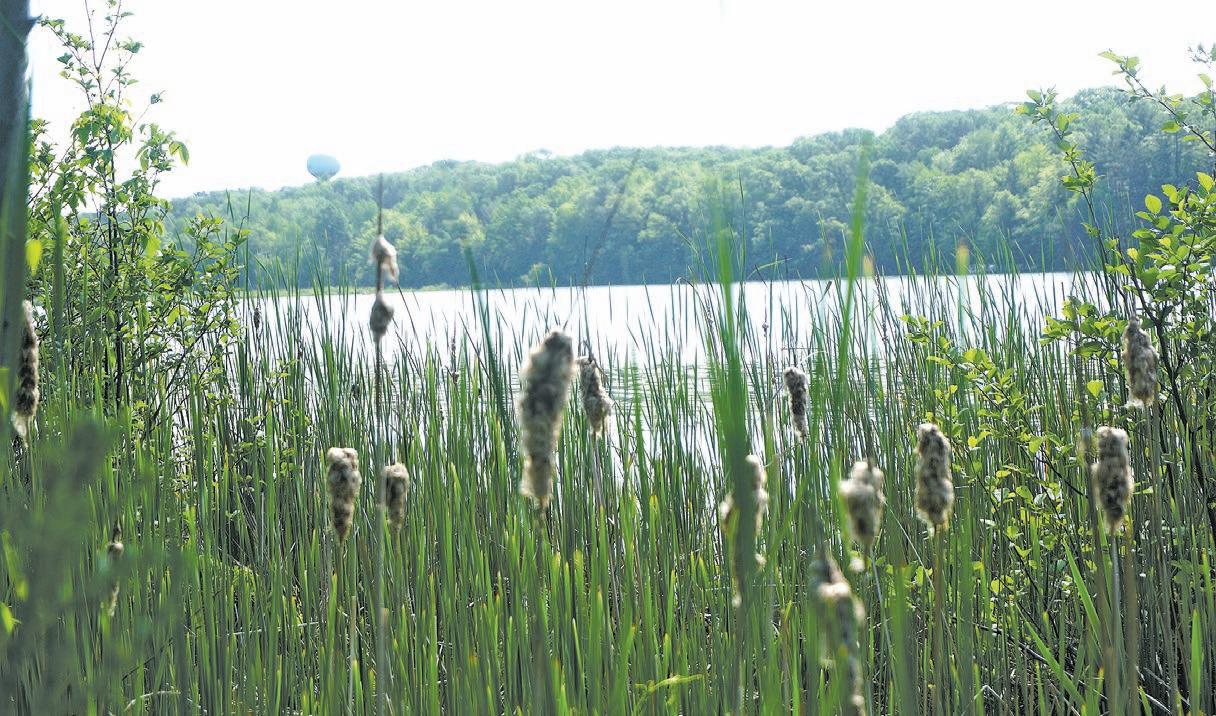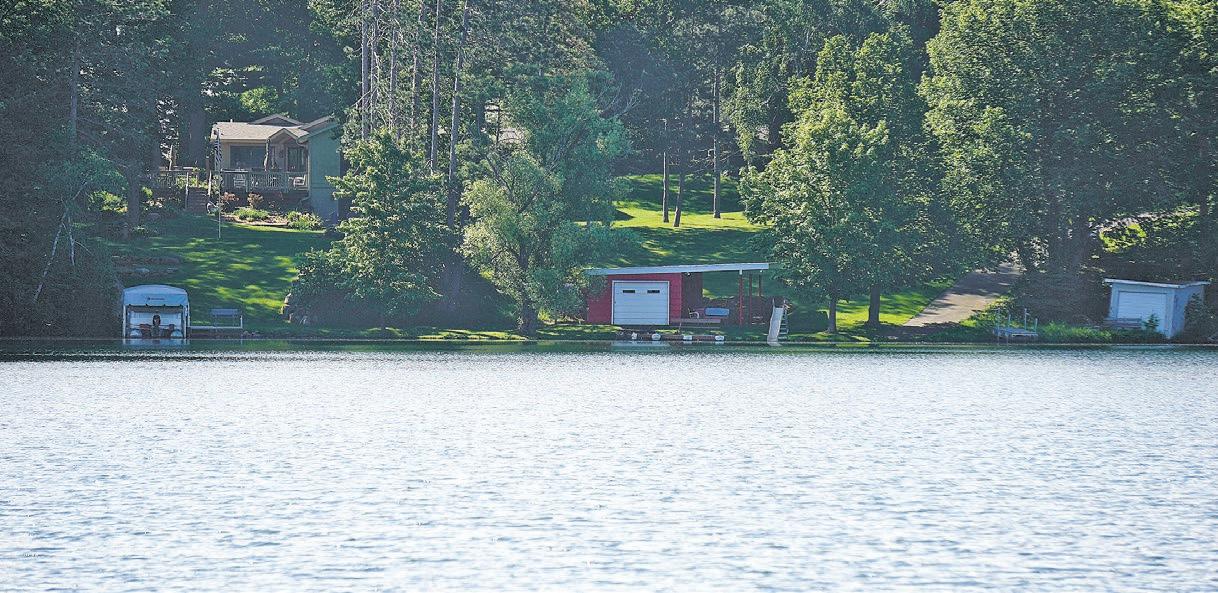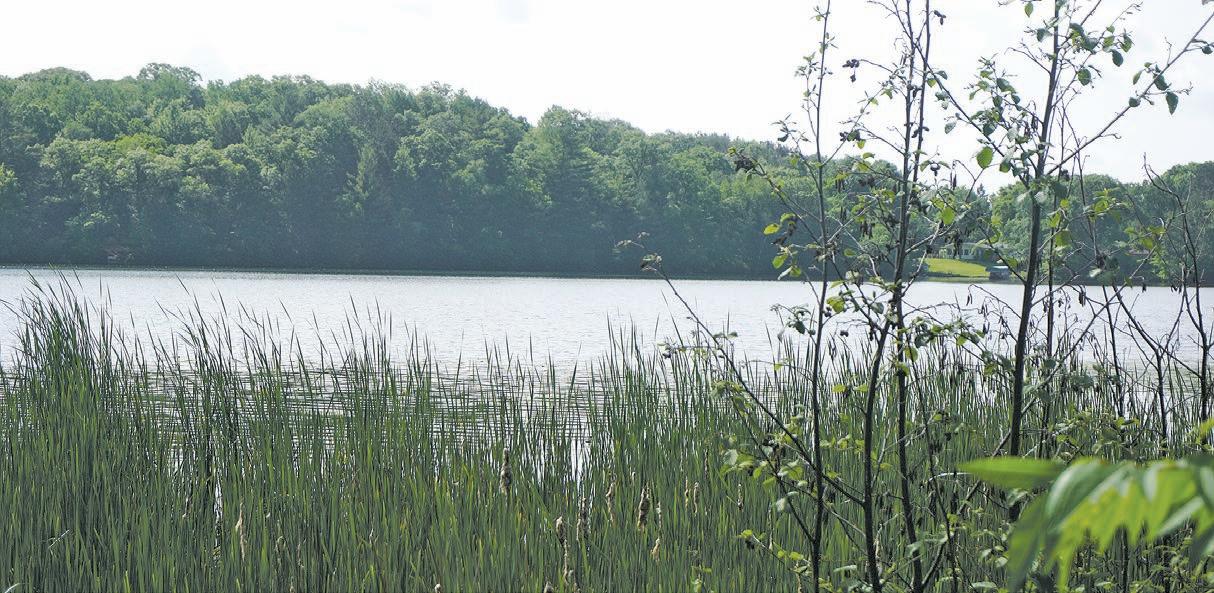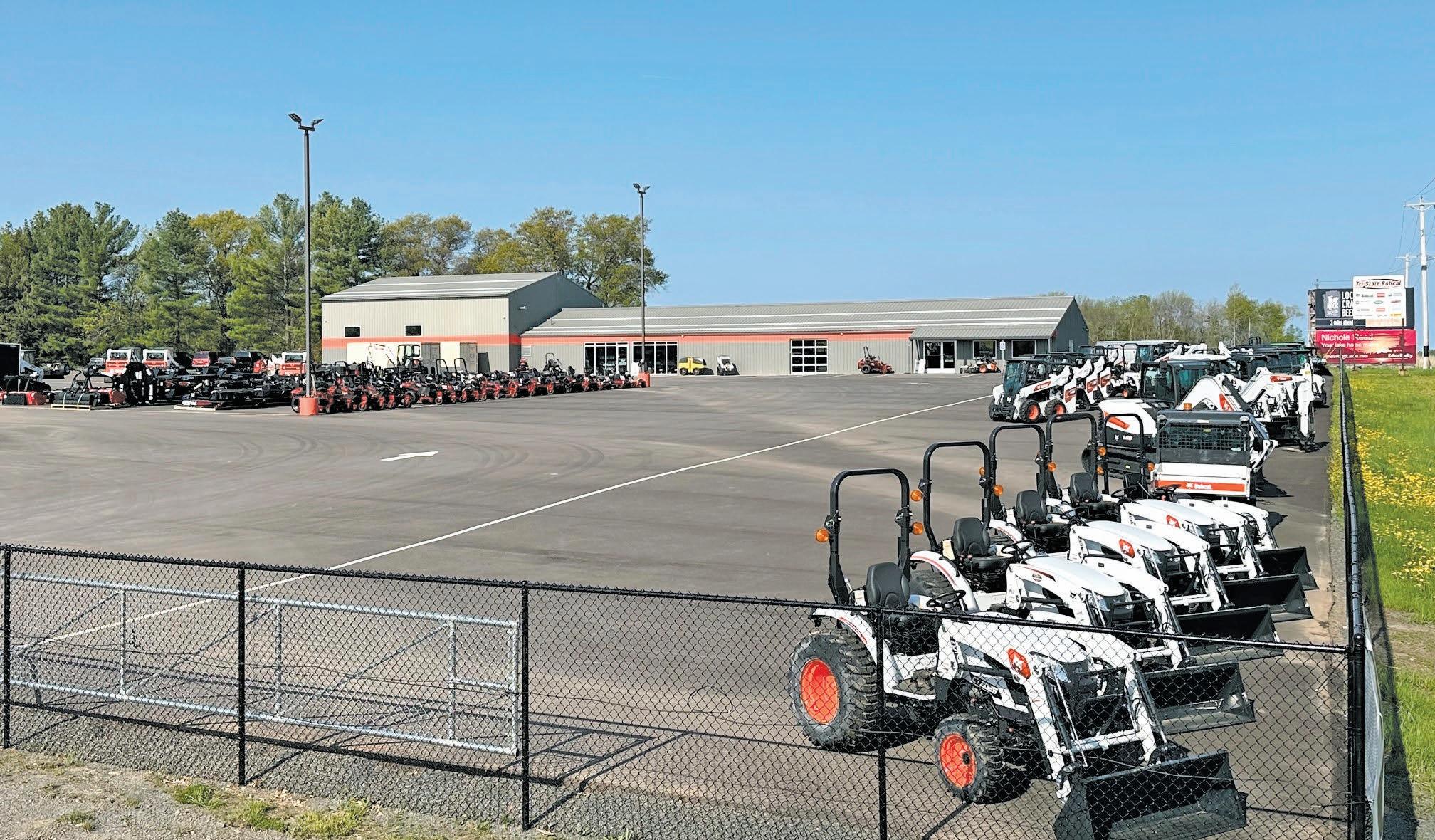L KER
Vol. 2024 • No. 2 • June 7 - June 20, 2024


Vol. 2024 • No. 2 • June 7 - June 20, 2024

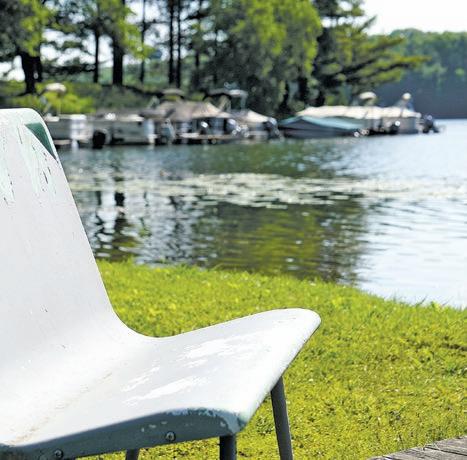
Crew Members | Page 3A
Port of Call | Page 2B
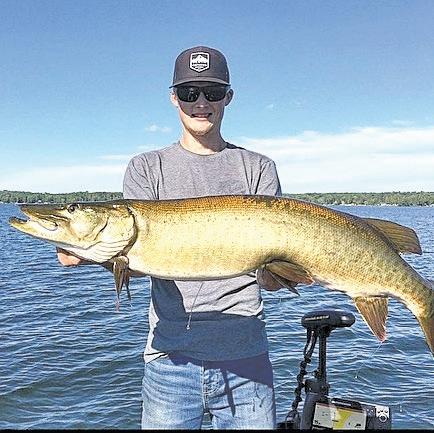
Fishery | Page 6A
MUSKELLUNGE
Shore Leave | Page 10A
FISHERMAN'S PARTY
Galley | Page 3B RECIPES
Shore Leave | 10B

Crew Members | Page 3C
Riggings | Page 9B
Riggings | Page 5C KAYAKS
Flotsam & Jetsam | Page 9C
Port Valhalla is a place many call home and their perfect escape from everything. Located on the northwest side of Pike Lake, Port Valhalla campground has been a hidden gem of a camping location for over five decades. The best part, though, is the campground is in its third generation of family managing the property. Now, Dena Babcock has taken the reigns from her father and will keep the fond memories created here going strong for future generations to enjoy.
This family tale begins in the year 1971, when Babcock’s uncle, Keith Olson, bought the property that is now known as Port Valhalla. After purchasing the property Olson managed it and made sure it was a great spot to spend summers while camping. Through those years, interesting and fun people made their way there, creating a respectful community.
Olson was known as a handy man and had a knack for fixing most everything on the property himself. After 25 long years of managing the property, Olson unfortunately passed away. Not wanting to see the campground go to new owners or made into housing, his brother, Lee “Herman” Olson took over the campground in 1996.
“My uncle passed away and it was an opportunity that he saw, and I don't think he wanted to get rid of it. And he just decided, I don't know what made him decide, to take it over, but he decided to purchase it after my uncle passed away and keep on running it in the family,” said Babcock. “I think probably so that the people that were here that we've known and loved
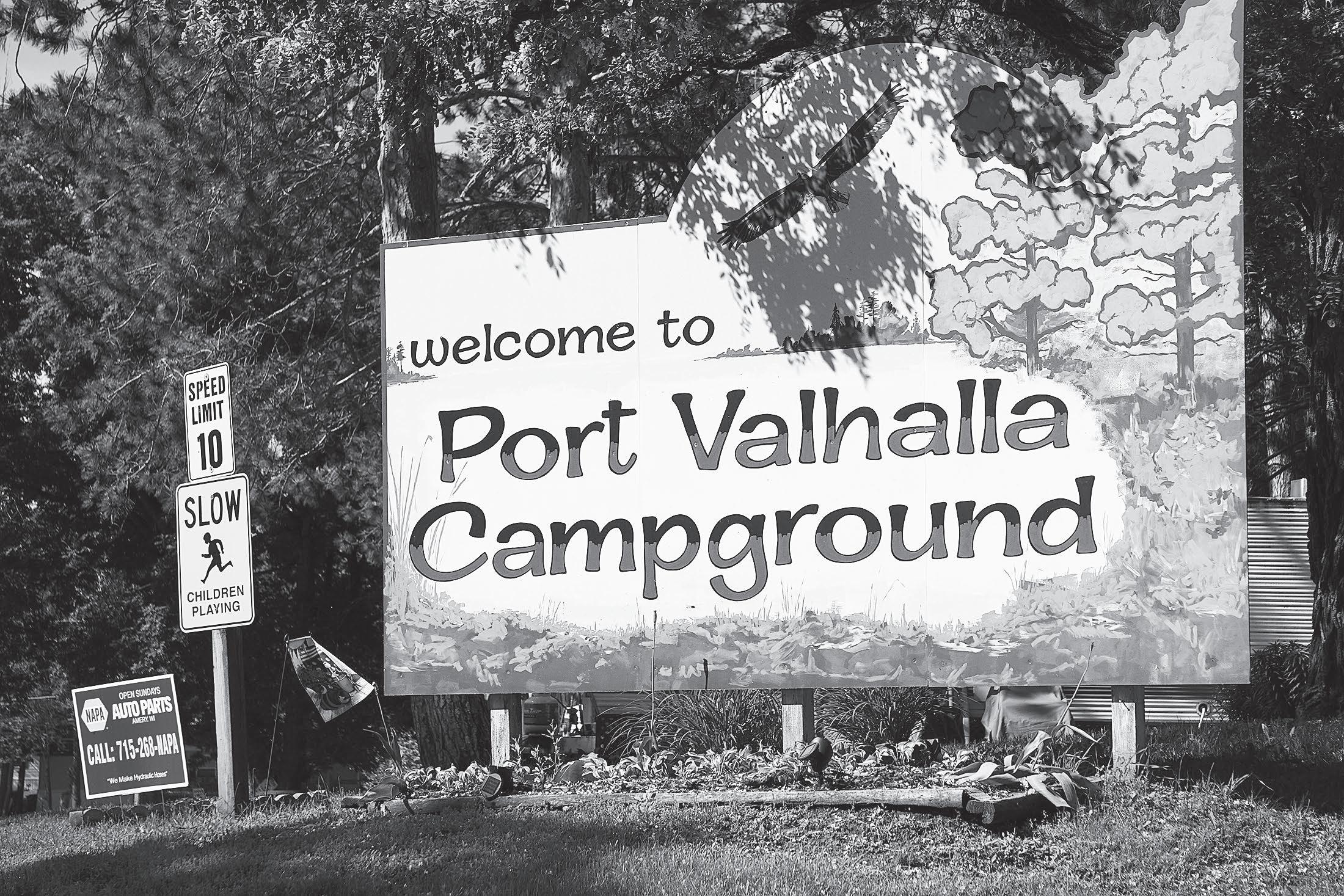
forever didn't have to worry about somebody else coming in and buying it and turning it into condos or anything. We kind of like it just the way it is. And I love it just the way it is too,” said Babcock.
After her dad bought Port Valhalla and took it over, Babcock would find herself spending a lot of time on the grounds. At first she would play and get along with most of the people in Port Valhalla. The one thing that stood out among others is the sense of community she felt as she made her way through the grounds and learning

who people were. At times, it felt like there were many sets of grandparents throughout the property who would always make sure she was okay. "
As Babcock got older, she began to learn responsibilities from her parents by working at Port Valhalla. She would clean cabins for the people who stayed there, getting to know them more deeply and created a sense of home for her. After some time, she would eventually be promoted to handling the books of the campground, something she thinks gave her the best kind of experience for the future.

“I've done the books for years for my dad, so I kind of got into that and it's really taught me a lot about running a business. Just the ins and outs of the bills you have to pay and the things you have to do to run the business. And it really set me up for success to own it. Because I kind of just walked into it and it wasn't stressful necessarily. It was just like riding a bike. Like it was just natural. So, I really appreciate my dad for giving me the opportunity,” said Babcock.



After her initial education in the campground workforce, Babcock would go to college and found work after she was done. But there was one surprise that snuck up on her about four years ago. Her father, Herman, had made a decision to sell the campground. The property had an appraisal done and seemed like things were all set in stone. Except that didn’t sit well with
Babcock. She couldn’t remember the conversation they were having in the moment, but she did remember asking “What if I bought it?” From there the conversation snowballed into getting prepared to keep the business going, and keeping it in the family. Herman also has another business and was ready to retire. For Babcock though, the thought of not having Port Valhalla in
the family was very hard for her. One of Babcock’s worries was what if someone came in and changed the way her family had operated the facility. She felt strongly that it should be left unchanged and couldn’t ignore those special feelings of the unique community.
“I think it was worrisome for me that somebody, a developer is going to come
in here and buy it and they're going to kick everybody out and make it condos or build it up or something like that,” said Babcock. “And I just don't think it's meant to be that way. I think it's meant to stay a little campground. And like I said, feeling of community here is important and I don't want to see that go away.”
Now going into her fourth year as owner, Babcock has carried the torch left for her from her dad and uncle. Although Herman doesn’t own the grounds anymore, he is still willing to give advice when needed for Babcock. One thing she commented on was how she isn’t as laid back like her dad, but knows when to put her foot down and work through confrontations in a appropriate way.
Her biggest struggles in this journey at Port Valhalla came in her first year as she was trying to establish rules and get used to her new role. Year after year she has continually gotten more comfortable and appreciates, even now, the fond memories of her time here. Looking ahead toward the future, Babcock has some plans for the campground to help improve it and make a little more room for some more campers that want to take advantage of the space. But that will be a much later down the road project.
Now, she is enlisting the help of her two boys to help with the campground and manage the work. Babcock was reminiscent of her time in the past and is looking forward to the opportunities


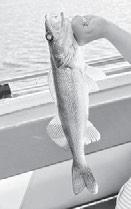
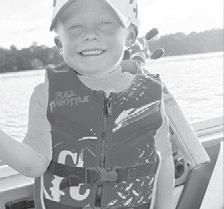



of the future. She hopes one day that one of her sons will want to take it over and keep their legacy going. Until then, she is happy and grateful for
the experiences her father and uncle passed down to her.
“I'm just really grateful that they have been here and taken care of it this long
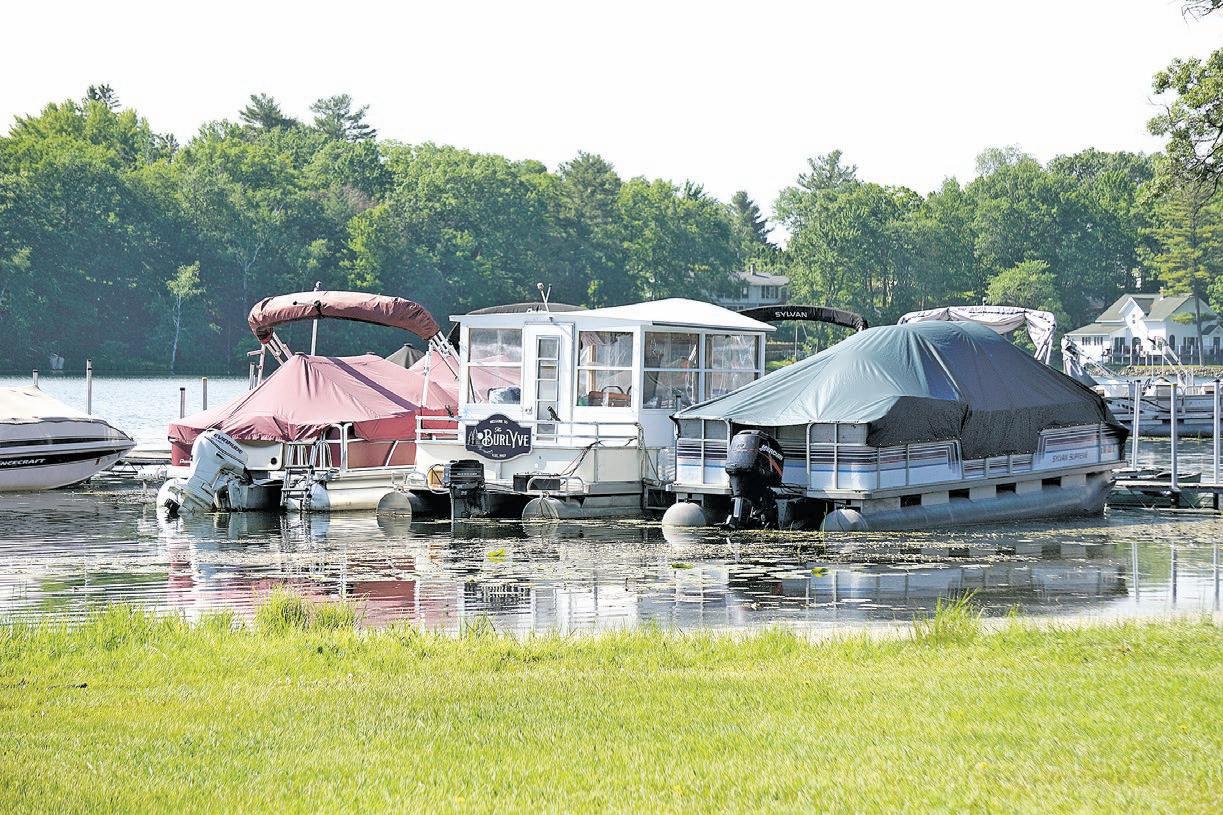
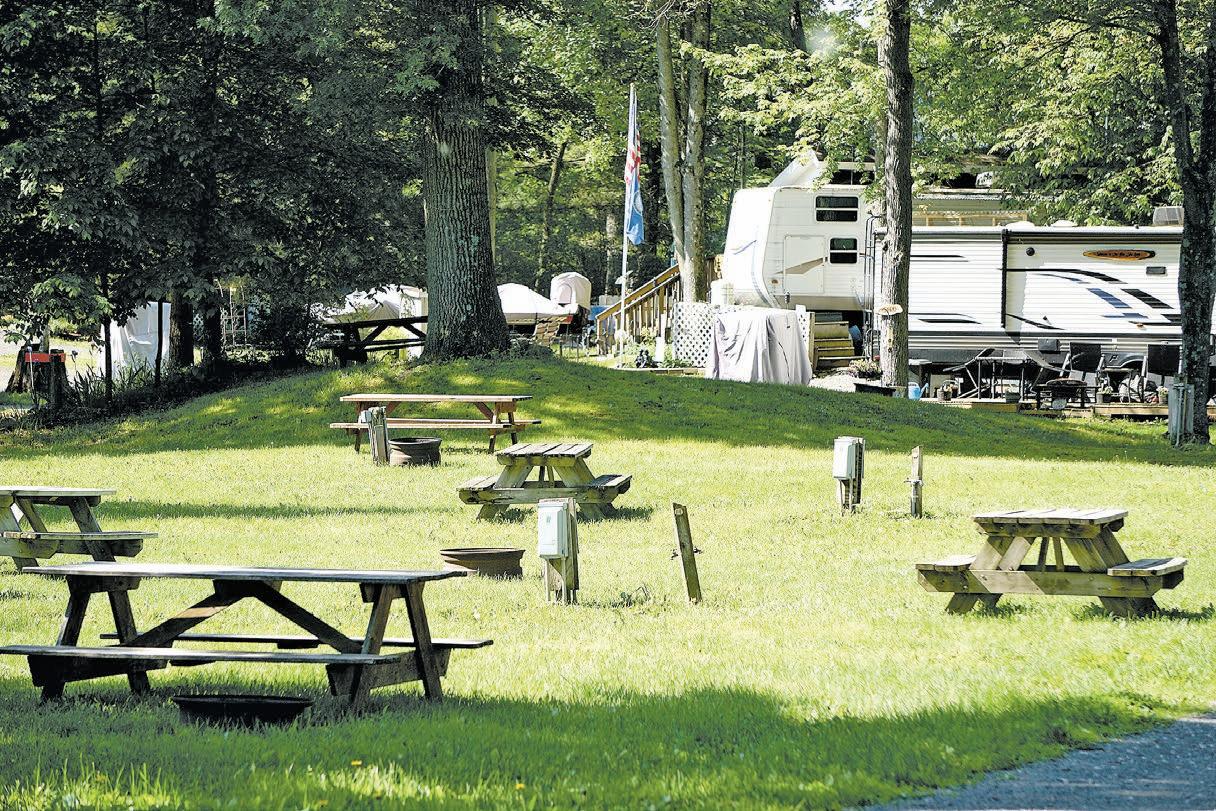

and introduced me to this as a job. I mean, it's nice to have a job where you feel at home and all the people here are great. So, you having that sense of
belonging in your career is the most important thing to me, just to be at peace and know that this is it,” said Babcock. ■
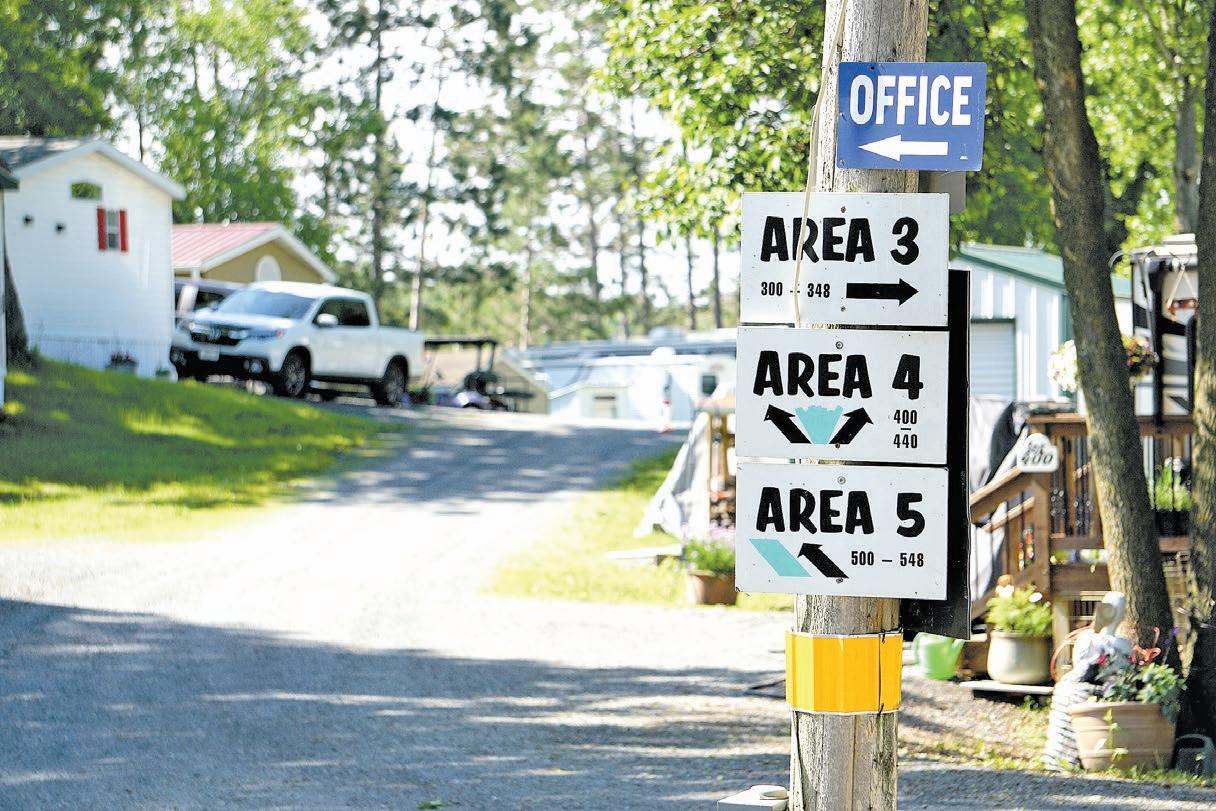
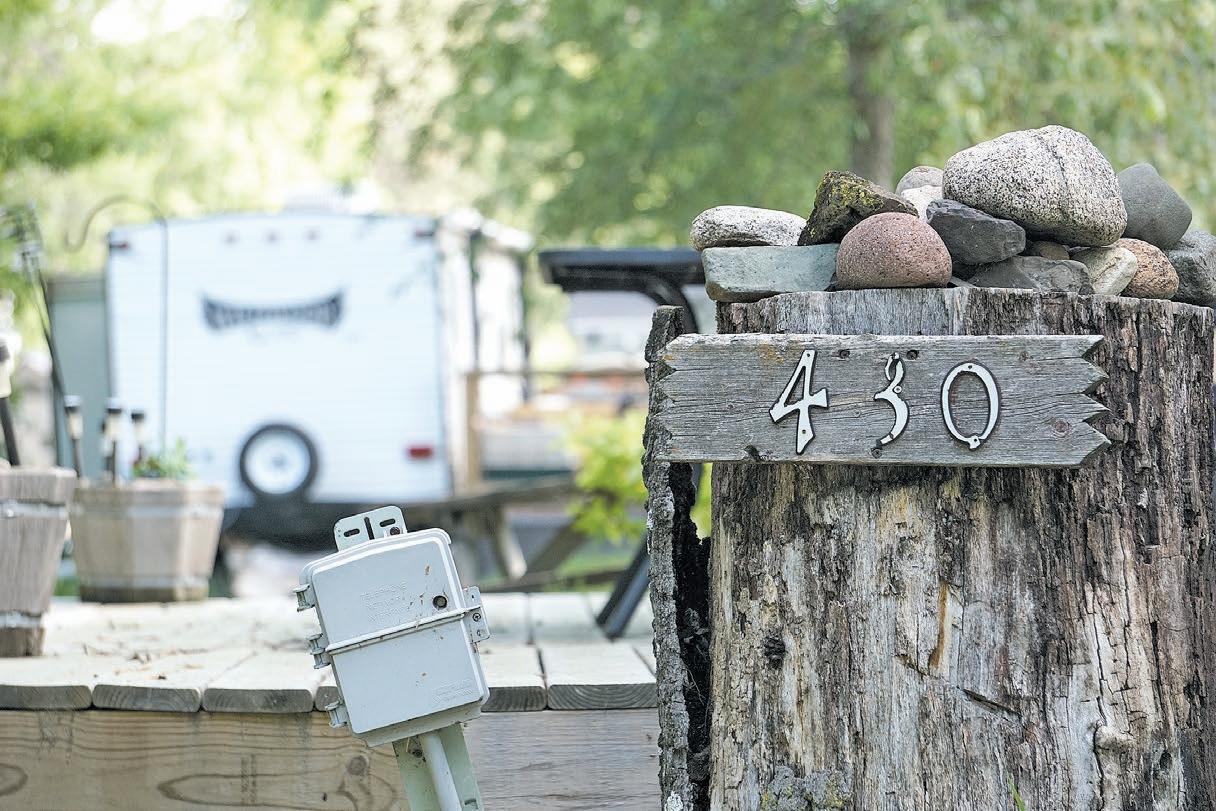
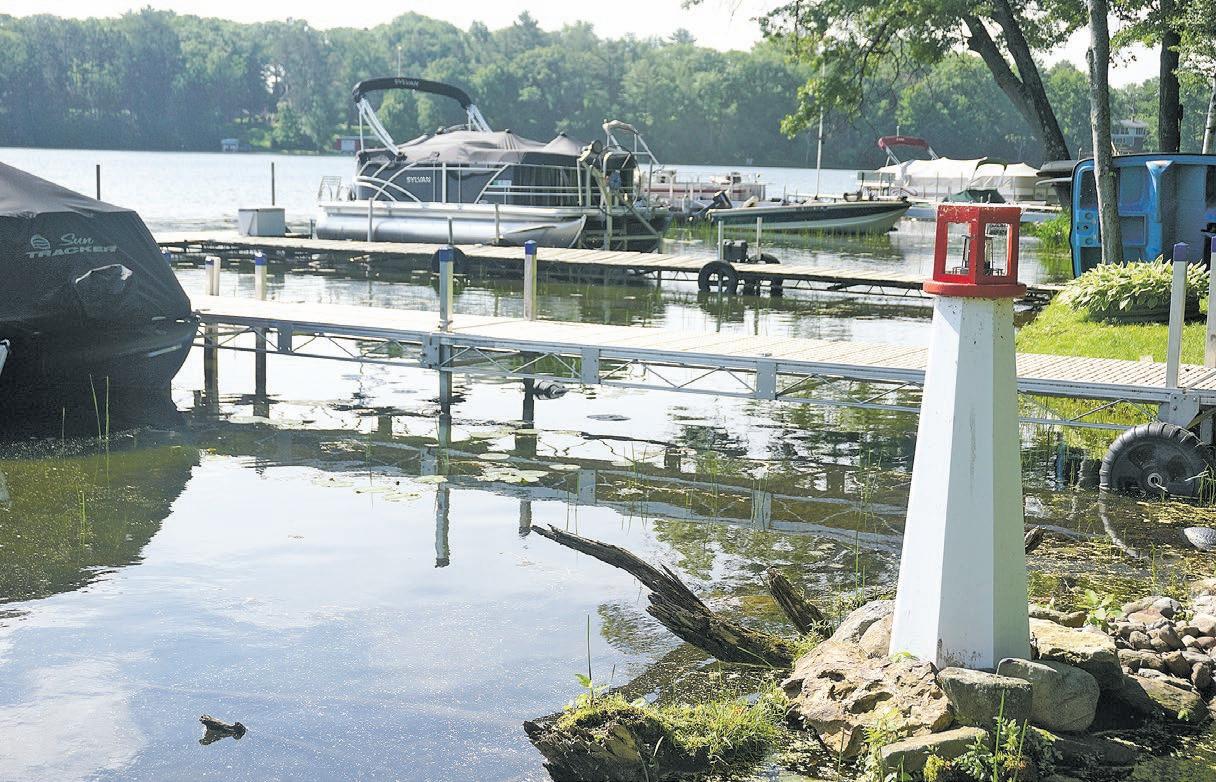

When people think of large fish in the lakes and rivers in the area their first thought may lead them to a Sturgeon. However, another species that may drag you around the lake would be Muskellunge. Also referred to ask a Musky, these fish are one of the reasons that makes the state of Wisconsin so sought after with anglers.
Muskies are the largest fish in the Pike family of fish. Similar to other pikes, they are long and narrow, have a large mouth, and have pointed teeth. The fish can have multiple different coloring patterns depending on where the Musky is located. Most often, however, it is recognized by the vertical bars and spots on skin that are darker than its skin. Northern Pike look similar but their patterns are horizontal.
Muskies can be found almost everywhere throughout the state. Its original range was in lakes and rivers in the north with some areas in the south. Now that lakes can be stocked,
the Musky range and habitats have expanded throughout Wisconsin. The fish can also be found in the Great Lakes. The heaviest density of the fish can be found in the headwaters of Chippewa and Flambeau, with the other high densities found in Wisconsin river systems. More than 660 lakes and 48 streams dispersed through 53 counties have the Musky navigating their waters. Typically, there is one Musky adult for every two or three acres on a lake, making them elusive fish to catch or even find.
The fish is generally a solitary fish and have small home ranges that they swim through. During spawning and when their food supply is short, they will roam to find food and a suitable spot for laying eggs. These predatory fish also have a wide range of lake habitats that they can use to their advantage. They thrive in lakes that have a range of depths, a range of aquatic plants, and varying water temperatures but feel most comfortable when it is cooler. The size of the lake and prey also plays a direct impact into how large the Musky
will be.
The Musky is an ambush attacker, generally hiding throughout the weeds, rocks, and stumps. When an unlucky fish drops by, the Musky seizes its chance and quickly impales the fish with its teeth. It will then eat the head first before moving on to its next prey. The Musky has a wide diet of what it will eat. Its favorite gamefish to eat are suckers, perch, and cisco species. From time to time, there are also other animals that aren’t aquatic to be found in the Musky’s stomach. The species also has also had a taste for muskrats, ducks, and even mice. Depending on their food sources, it can contribute to the massive size of the fish. They can eat prey up to two thirds of their own body length.
With the popularity that surrounds this fish, it’s important that the population stays healthy. Every year the Musky spawn in mid-April to late May when the water temps rise from 50 to 60 degrees. The males seek out females in warm and shallow areas, swimming side by side for several hundred yards.
Between the male and female musky, they will spread upwards of 20,000 to 200,000 eggs a year. When the eggs are laid, the adults go back to business, leaving the eggs to fend for themselves. They return to the same area every year of their life to lay their eggs.
When the baby Muskellunge hatches, it feeds on zooplankton for the first few days before switching to eating live fish. During this time, the babies also fall victim to predation from other larger fish that include Bass, Yellow Perch, Sunfish, and Northern Pike. By the time summer ends, and the babies are still alive, they will reach a length of 12 inches. During the first four years the fish will grow rapidly reaching adulthood at year four and measuring upwards of three feet long. When the Musky reaches adulthood it becomes the apex predator of their aquatic habitat and will rule the waters for about 18 years.
What makes Muskies such a unique fish, especially in the state, is that it is




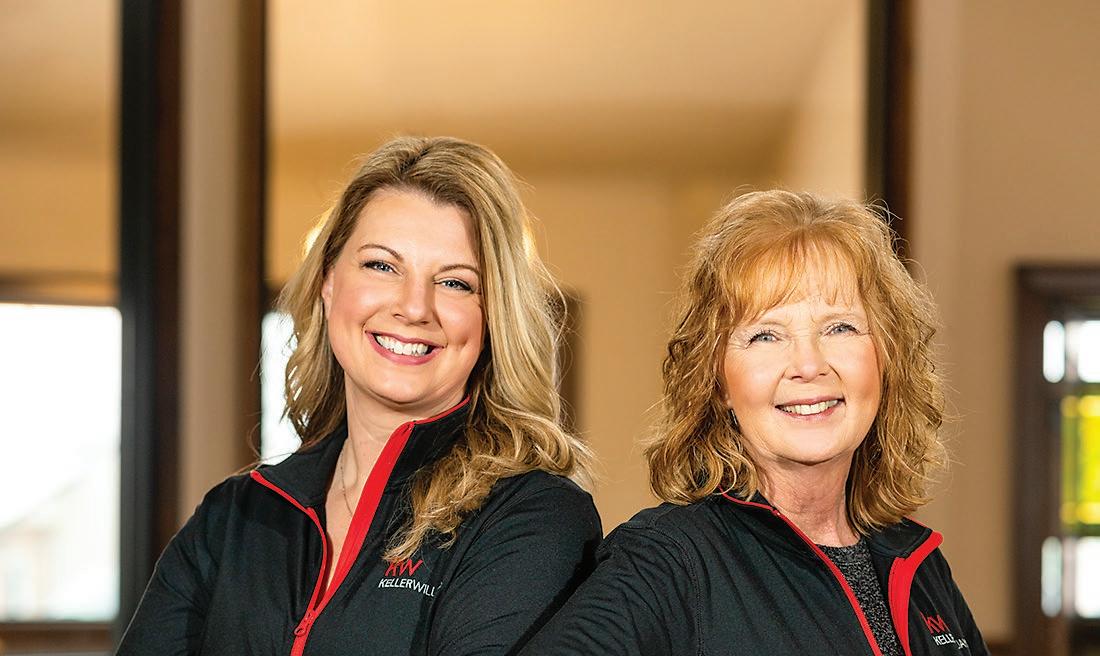




found nowhere else but in the Midwest, and northeastern parts of the United States. Wisconsin is known as one of the best states for fishing these species, and even made the Musky the state fish in 1955 according to the Wisconsin Department of Natural Resources. Thousands of people visit the state every year for a chance at bagging one of these trophy fish. Anglers will
spend upwards of 50 hours on average to catch a legal sized Musky. What makes the fish such a thrill for anglers are its many different ways to elude being brought into the boat or on shore. Sometimes the Musky, when hooked, will jump out of the water, try to shake the hook off, will lie near the bottom like a rock, and even wrap the line around a stump to avoid capture. Not
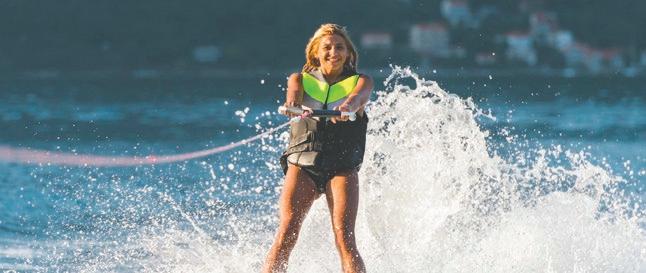
only are they difficult when it comes to keeping them on your line but, depending on the size, it can also bend and damage your rod and reels. These characteristics make the Musky one of the toughest fish to catch, but also the most rewarding.
To catch one of the Muskies you will have to put a little time in and know where to look. The first two things are a heavy
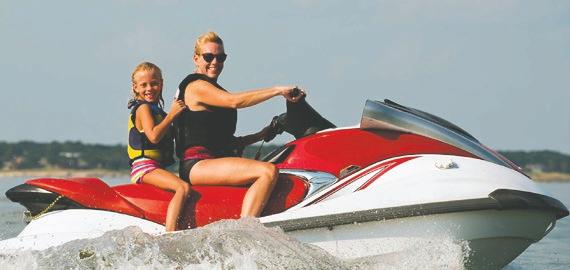

braided line and a longer, stronger, fishing pole. The lures one would need would need to be on the larger side with spinners, crank-baits, and large spoon baits. Live bait should be suckers measuring about a foot long.
Muskies will sit near dropoffs and sand bars along the shores. The fish will hit baits that have significant movement and action in them. From there,
it is just consistent casting and waiting for the trophy on your hook.
What also makes muskies so unique, and the Wisconsinite culture that surrounds them, is to catch and release them. There are two main reasons for this. The first, is to let other anglers have the chance to bring one of these fish onto the boat or shore for photos. The next, is that Musky are rarely made for human consumption. The reason being is that because they are a long lived fish species, throughout their life they will pick up contaminations. This will come in the form of mercury or polychlorinated biphenyls (PCBs).
The Wisconsin DNR recommends those who do consume the Musky, that no one under the age of 15 and anyone who is pregnant eat the fish. Adults who are not in those two categories are also only recommended to eat one meal a month that involves a Musky.
Muskellunge are a big part of Wisconsin’s culture and bring significant financial impacts to many areas of the state that have this fish species. If you or friends find yourself in Musky country, and hope to bring one in, check out the Wisconsin Department of Natural Resources for additional information and regulations for the species. ■


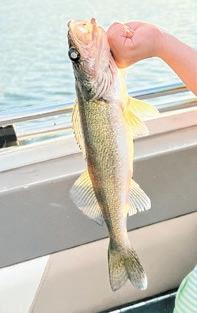
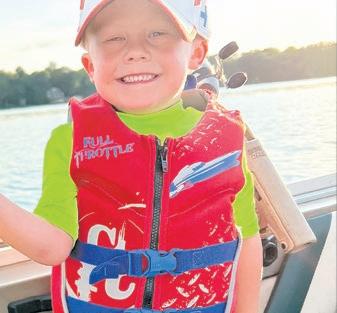



West Denmark Lutheran Church
2478 170th Street Luck, WI 54853
715-472-2383
westdenmark.org

Worship Sundays 10 am
Pastor Linda Rozumalski
Reconciling in Christ Green Congregation

113 W Main | P.O. Box 195 Milltown, WI 54858 715-768-3444
Sunday Service 10 am
Pastor Chuck Bailey milltownhof@gmail.com

All Are Welcome to Worship with Us!
Sundays: Worship 10:15 a.m. • Coffee Fellowship 9:30 a.m. Pastor Laurie Kenyon Woods

1115 Mains Crossing Ave. • Amery, WI 715-268-9291 • www.balsamlutheranchurch.org



Lutheran Church


Church 240 W. Elm St. • Amery Tim Bjorge, Pastor Sundays: 9:00 am Worship Weekly Live Stream on Facebook: FirstLutheranChurchofAmeryWI 715-268-7135 • www.flcamery.org 715-857-5580
447 180th St • Osceola, WI 54020 • 715-294-2936 westimmanueloffice@gmail.com
REDEEMER LUTHERAN - LCMS
Pastor Lori Peper
• Worship each Sunday at 9:30 a.m.
• Summer Worship outdoors 2nd and 4th Sundays
• Coffee and goodies after church
• Bible Study on Tuesdays at 10 a.m.
• Children’s Church Sundays a 10 a.m. ELCA All are Welcome

Our Lady of the Lakes Catholic Church
EDWARD CLEMENS, PASTOR
Join us for weekly online or in person worship on Sundays at 9:30 a.m.
See our Facebook Page

Worship
Join us in person or online at www.eastbalsam.org 715-857-5411 contact@eastbalsam.org Fully Accessible

507 Main Street Balsam Lake (715) 405-2253
Saturday Mass 6:00 p.m. Sunday Mass 8:30 a.m.

600 Keller Ave. S., Amery 715-268-7283 redeemerlutheranchurch-amery.com St. Joseph Catholic Church
Visit us online: stjosephamery.org ourladyofthelakes.ws
1050 Keller Ave. N. Amery (715) 268-7717 Saturday Mass 4:00 p.m. Sunday Mass 10:30 a.m.

Located on the Mill Pond in Balsam Lake Sundays, June 2, 9, 23 • 11 a.m. Worship
6 p.m. Potluck • 6:45 p.m. Worship 305 1st Ave E, Balsam Lake 715-485-3800 www.faithlutheranbl.org


















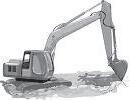

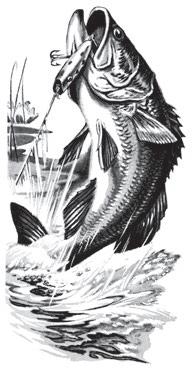






Lake Magnor resides in the Town of Richardson and hasn’t been spared from invasive species. The massive lake west of town sees many people enjoying their boating and fishing, but issues arise in and out of the water. The lake is plagued by Purple Loosestrife and two different kinds of Mystery Snails, with the Loosestrife being a relatively new invasive species.
“Purple loose strife is a kind of a relatively new invasive, it's also been here for a while, but it's one that we're really focusing on management,” said Colton Sorenson, Water Resource Specialist at Polk County Land and Water Resources Department. “Purple Loosestrife, what it does is it can inhabit mainly wetland conditions, but it'll be found on shorelines, it can be found in ditches, it can be found just about
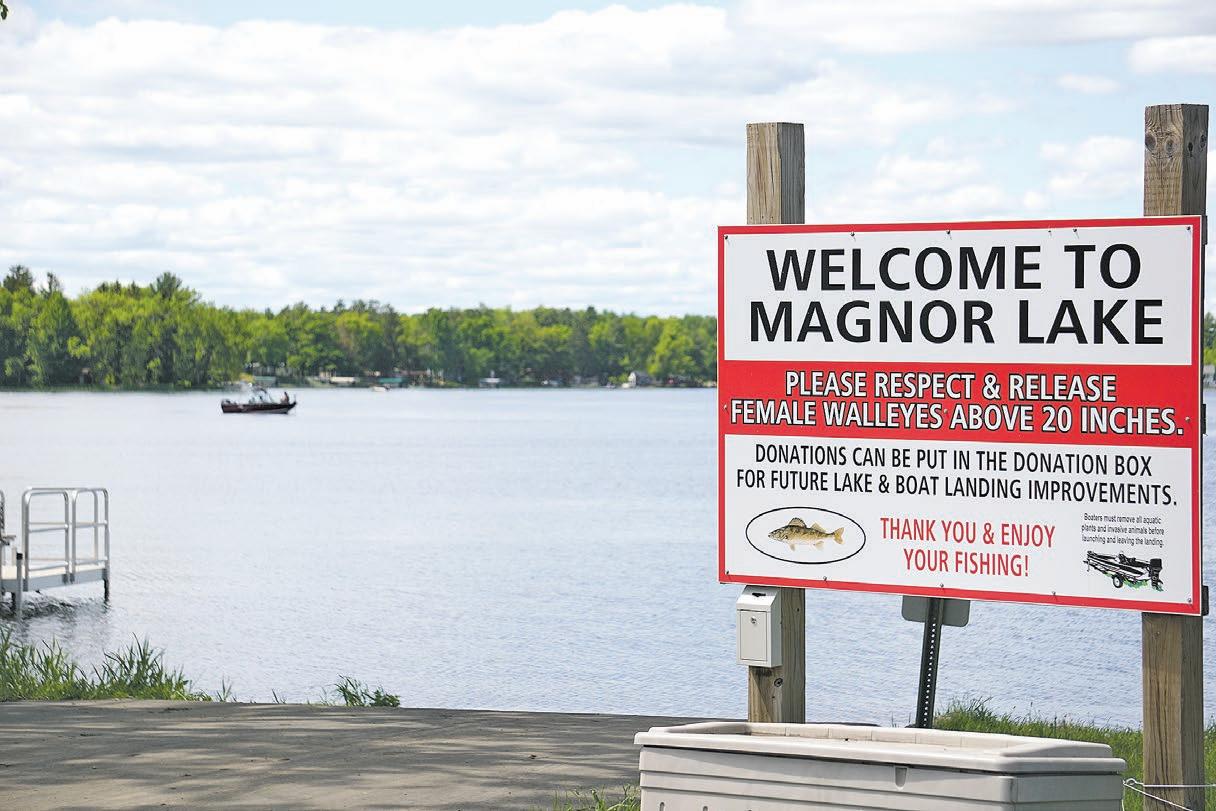
anywhere. However, what we kind of like to say is it likes to have its feet wet, so it does prefer wetland conditions, but

it can go grow just about anywhere.”
Purple Loosestrife is a wetland perennial plant that has purple flower
spikes. It can grow upwards of three to seven feet tall depending on the area. Some of these are sold as an ornamental plant, that are sterilized, but still are able to produce wild seeds.
The species of plant is prolific in its ability to spread and seed areas. Once the plant has fully matured, it will produce upwards of a million seeds per year, making its ability to spread alarming.
At this point in time it is a statewide invasive species and Polk County isn’t left out. At the county level, it has only infested a handful of lakes. Out of more than 400 lakes, it has only taken hold in 32 of the waterbodies. There are many different ways that invasive species are managed, and Purple Loosestrife might have the most unique management tools that are effective in keeping the population low.


Ingredients
MARINADE:
• 1/3 c. balsamic vinegar
• 1/3 c. Worcestershire sauce
• 1/3 c. olive oil
• 2 garlic cloves, grated
• 1/2 tsp. ground black pepper
• 1/4 tsp. red pepper flakes (optional)
• 2 tbsp. honey, divided
• 2 tbsp. Dijon mustard, divided FOR THE KEBABS:
• 1 1/2 lb. sirloin or New York strip, cut into 1-inch cubes
• 8 oz. baby portobello mushrooms, large stems removed
• 1 red onion, cut into 1-inch pieces
• 1 green bell pepper, cut into 1-inch pieces
• 1 yellow bell pepper, cut into 1-inch pieces
• 1 red bell pepper, cut into 1-inch pieces
• Chopped fresh parsley, for garnish
Directions
1. For the marinade: Whisk together the vinegar, Worcestershire,
olive oil, garlic, black pepper, red pepper flakes, and 1 tablespoon each of the honey and mustard in a medium bowl. Transfer 1/4 cup of the marinade to a small bowl; whisk in the remaining 1 tablespoon each honey and mustard to make a glaze. Set the glaze aside.
2. For the kebabs: Add the marinade and the meat to a resealable plastic bag. Seal the bag and massage it gently to coat all of the meat. Refrigerate at least 1 hour or up to 6 hours. Remove the meat from the refrigerator 30 minutes before grilling.
3. If using wooden skewers, soak in water for at least 30 minutes. Preheat the grill to mediumhigh heat (400 to 450°). Thread the meat, mushrooms, onion, and peppers on the skewers, alternating as you like.
4. Grill the kebabs uncovered until grill marks form, about 4 minutes. Turn the kebabs, and brush the grilled side with half of the glaze. Continue grilling until grill marks

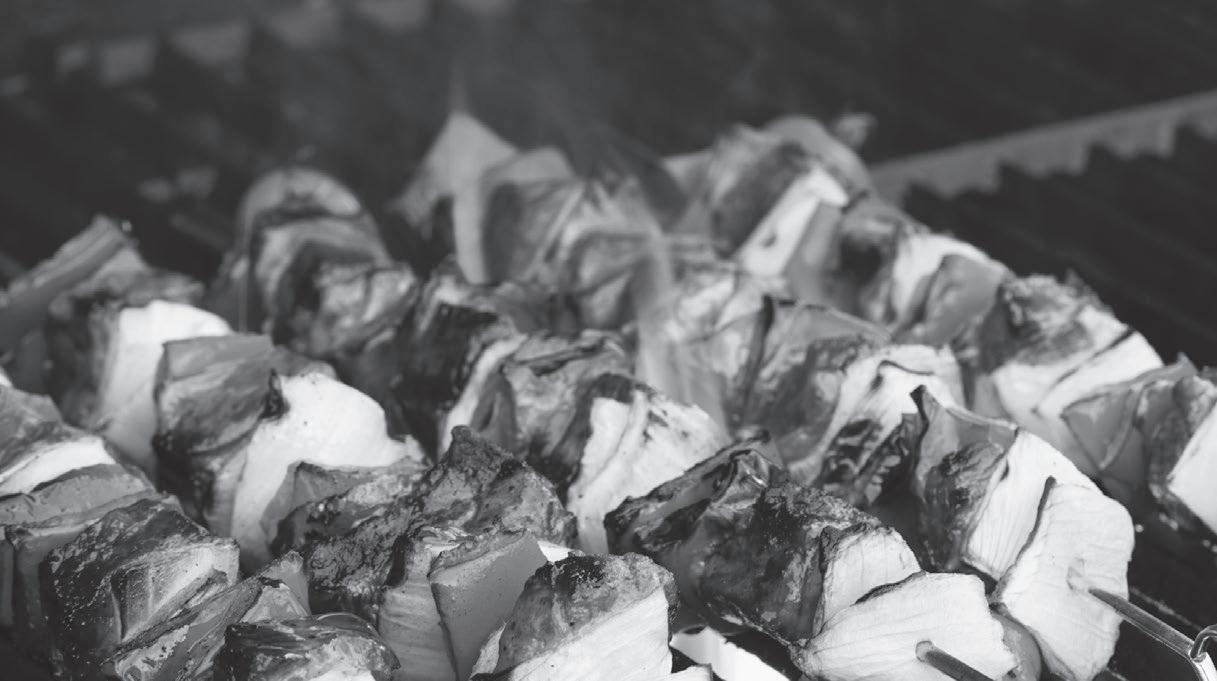
form on the bottom side, 3 to 4 minutes more. Turn the kebabs, and brush with the remaining glaze; grill to desired degree of doneness (about 135° for
medium), about 1 minute more.
5. Let kebabs rest for 5 minutes. Sprinkle with parsley just before serving.



and pepper to taste
Directions
1. Preheat grill to medium-high heat.
2. In a bowl, whisk together olive oil, lemon juice, oregano, basil, garlic powder, salt, and pepper.
3. Brush marinade over both sides of walleye fillets.
4. Grill fillets for 4-5 minutes on each side, or until the fish flakes easily with a fork.
5. Serve hot and enjoy!
Ingredients
• 1 pound lean ground beef
• 3/4 cup water
• 1 (1 ounce) package taco seasoning mix
• 4 (2.5 ounce) packages corn chips
• 2 cups shredded lettuce
• 1 cup shredded Cheddar cheese
1 chopped fresh tomato
• 1/2 cup sour cream
• 1/3 cup salsa
Directions
1. Cook and stir ground beef in a large skillet over medium heat until browned and crumbly, 7 to 10 minutes. Drain excess oil. Mix in water and taco seasoning. Bring to a boil, then reduce the heat and simmer for 5 minutes, stirring occasionally.

2. Gently crush corn chips in the sealed bags. Snip one top and one bottom corner off each bag, then cut open along the side edge. Spoon equal amounts of beef, lettuce, Cheddar, tomato, sour cream, and salsa into each bag on top of crushed chips. Serve in the bag and eat using a fork.





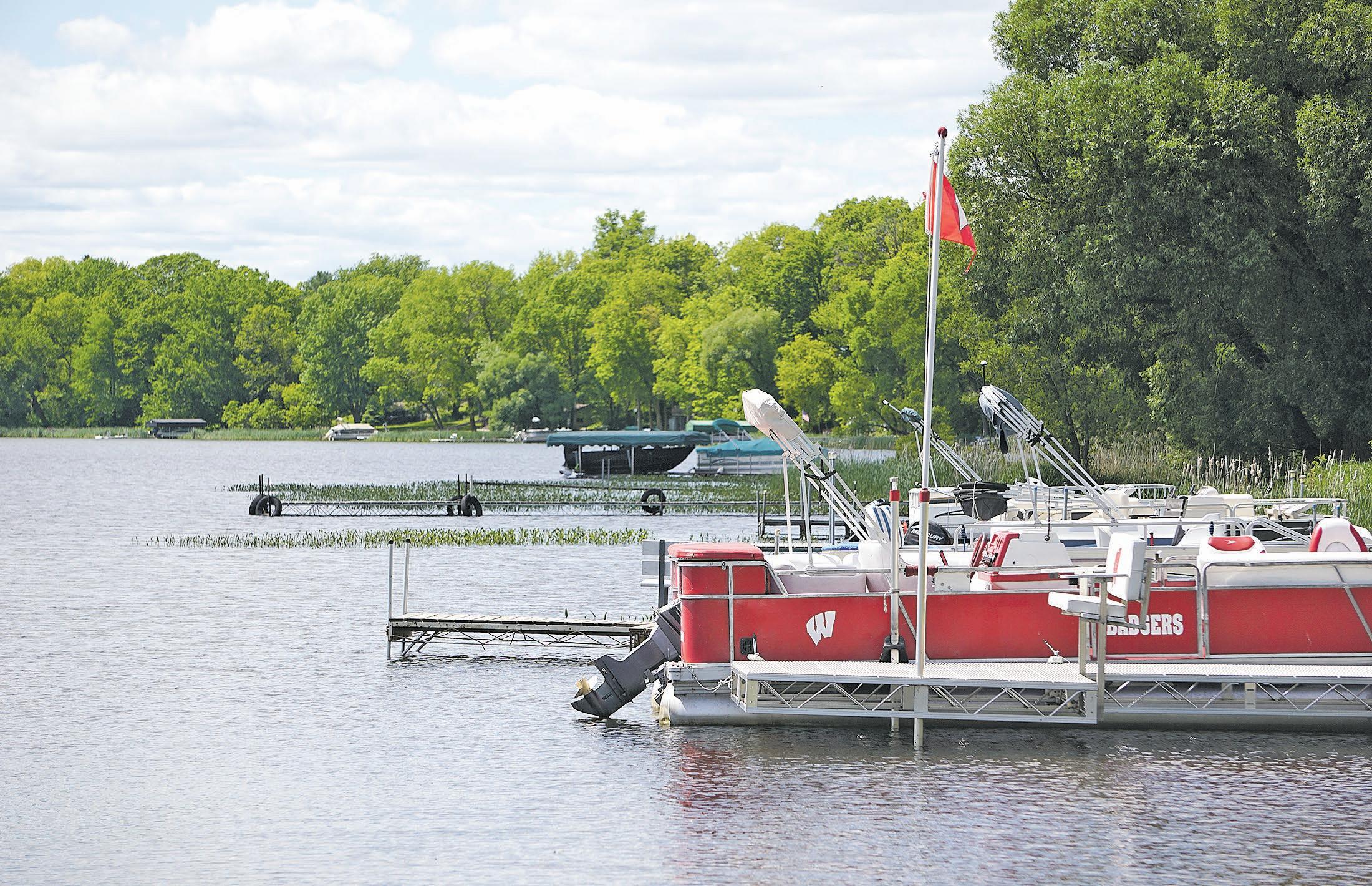
“The one cool thing about purple loose strife is there is a statewide effort to use a biocontrol to manage the populations. Because what happens is there'll be single plants that start and then the population will just grow and grow and grow and pretty soon there'll be an entire wetland that's totally taken over. It's just totally taken over by Purple Loosestrife and it's not native. So, the species that that live here don't usually cohabitate with it very well,” said Sorenson. “So, it can displace species, it can change habits with different species. It really can have a negative impact on the ecosystem. But what's cool about it though is the biocontrol, there's these little beetles called Galerucella beetles, and these little beetles only eat Purple Loosestrife.” Over the course of three decades the Wisconsin Department of Natural Resources has created the biocontrol program to help manage the invasive species. Through research, they found that there are four different insects from Europe that helps control the spread of Purple Loosestrife. The beetles,





The beetles have a significant impact on managing the Purple Loosestrife. The beetles won’t typically eat the plant until it is dead but will instead stress the plant until it cannot make any more seeds. LAKE MAGNOR | FROM 5B

although somewhat “invasive” themselves, do not harm the environment or displace any of the natural species inhabiting the area. The Galerucella beetles only eat the Purple Loosestrife and when there is no more to eat, they die. This strategy is unique compared to other management techniques because of its use of a natural predator for the plants. Not only that, but it is also a safe, and environmentally friendly way of managing the Purple Loosestrife without putting harmful chemicals onto the plants. The biocontrol strategy has even made its way to Polk County.
“Here at the county, we actually partner with a few other organizations on this, but we raise Purple Loosestrife
beetles. So these Galerucella beetles, we have a mass rearing cage where we actually collect Purple Loosestrife, and dig up the plants, they call it rootstock. We actually break off all the seed heads and stems, so we are not transporting any seed. And then we bring them back here and we raise the plants, then we put these beetles on them and the beetles let you know to let Mother Nature take its course,” said Sorenson.


























Your cabin is a place for family gatherings, both young and old sharing life experiences like fishing and swimming. A place to get away from it all, take a break from the daily grind, and recharge the batteries. You might be a firsttime cabin owner...or perhaps your cabin was handed down from parents or relatives. Either way, sooner or later, you are likely to want to make some updates to reflect your growing family or your changing needs. This will lead you to the Big Question: remodel or rebuild? We’ve identified 3 factors for you to consider as you begin to answer this question.
Consider the quality of the “bones”
What type of foundation does the cabin rest on, and what condition is it in? Does the cabin need updating to meet current codes and construction methods? Are your cabin’s plumbing, electrical, and HVAC systems up to date? The quality of your home’s systems aren’t always visible to the eye, but are critical to the structure’s longevity. Yours may have been repaired or upgraded over the years...or not. How do those systems measure up against today’s standards?
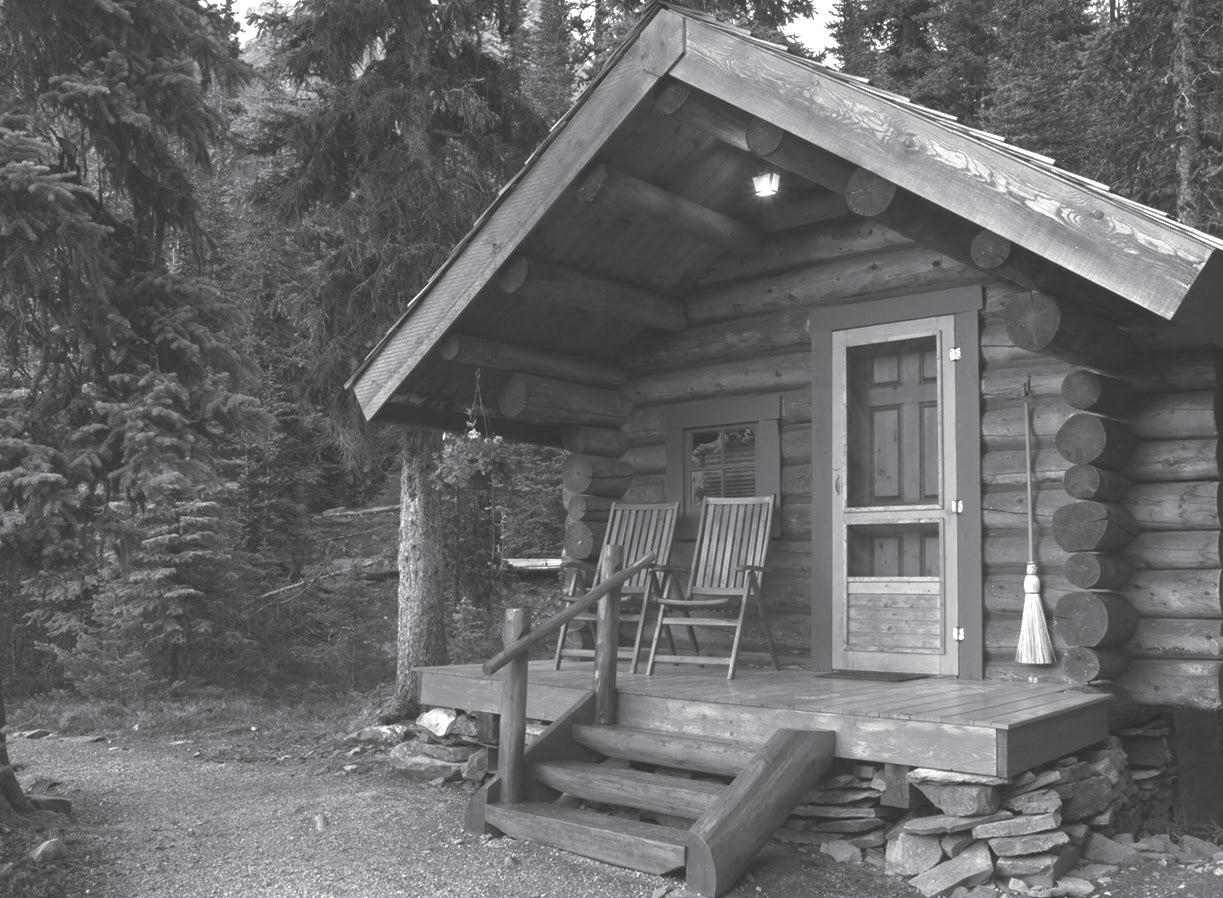
If your cabin’s systems are reliable and modern enough to last well into the future, great! Cabins that have good bones, with relatively modern plumbing and electrical systems, are typically good candidates for a remodeling project. Or, if your cabin’s systems are outdated, now might be the right time to invest in the systems of the home such as updated electrical service and HVAC. Tying into an older system often brings headaches and extra cost, so you might find that rebuilding the cabin might give you more flexibility and lower total cost.
Your lake home may have been intended to sleep one
family, but the demand to lodge extended family or friends is all too common. Have parents and kids developed needs for greater space and privacy? Is the structure too small for the growing needs of your family? If the overall size of the cabin meets your needs, that’s a good start...and remodeling can help you optimize the space you already have while maintaining your current setback. Or, if the size of your cabin doesn’t meet your current needs, you have options! Rebuilding your cabin gives you the most flexibility, but you could also consider remodeling and/or adding to what you already have. Either way, there will be setbacks and height requirements to consider, but working with an
experienced architect can help you find a way to expand up and/or out to capture valuable square footage you don’t have today.
Your cabin might be an adequate size for your needs, but if the rooms are small and disconnected, or if they don’t make the most of the views, your home isn’t delivering its full potential. Collaborating with an architect can bring your dreams to life, whether you need to enlarge your square footage or just make better use of the space you have.
Does your cabin use the space well? If yes, that’s great news. If you don’t need to change much about your cabin’s use of space, you’re likely a good fit for a simple remodeling project. Or, if you’re unhappy with the overall use of space, an architect can help you maximize both views and square footage.
When your cabin is ready for remodeling or rebuilding, hiring an architect will help ensure you’ll meet your goals. Architects can provide a vital role in helping to access existing structures and property conditions, and also
provide options to consider through collaborative design process.
It might seem a bit overwhelming to consider a major remodel or rebuild of your cabin. But when you partner with an architect that specializes in cabins and lake homes you’ll be in good hands. A licensed architect can walk you through the detailed pros and cons of rebuilding vs. remodeling, then design a solution for you that suits your specific goals.
Taking the right steps and considering your options – along with great design –can be an exciting and fun process that will provide lasting memories for current and future generations to come. Whether you want to modify your existing cabin, add on to the existing structure, or tear down and start over, an architect can help make your cabin meet the needs of today...and the future.
Troy Prosa is the principal architect at TAP Architecture, which specializes in architectural design for high-end lake homes in Wisconsin and Minnesota. TAP collaborates with clients to transform their vision into innovative, modern, thoughtful home design. Learn more at tap-architecture.com. ■

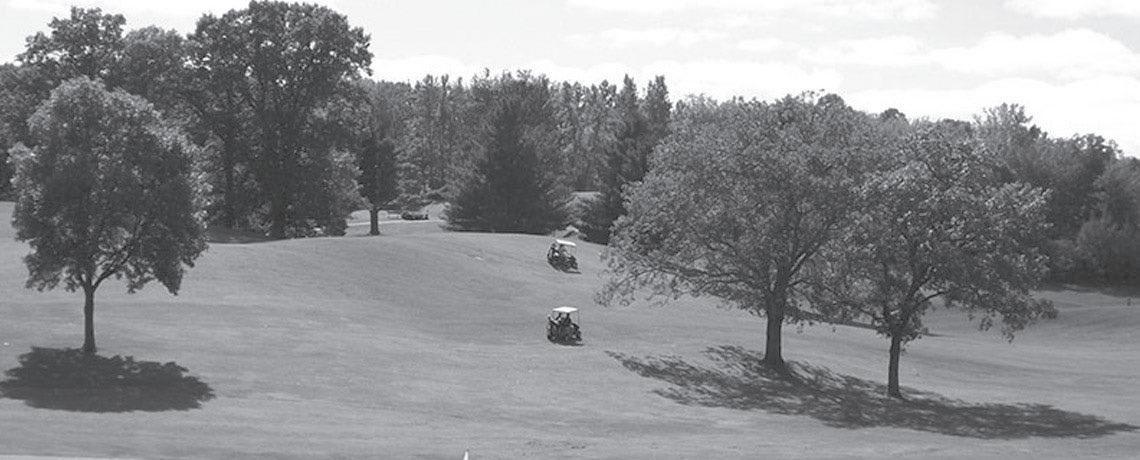













It may be called the Fishermen’s Party, but all are welcomed at Milltown’s village celebration with this year marking its 76th anniversary. Held on June 22, there will be events going on all day for kids and adults. All events, except for a handful, will be held in Bering Park.
Starting off the celebrations will be a Bass tournament held on Bone Lake from 6 a.m. until 2 p.m., giving the event its namesake. Going on in the village of Milltown will be an annual youth tournament at the baseball fields. Kids put together their baseball teams and play for bragging rights to become Fisherman Party champs.
Going into the park, people will notice a lot of different food vendors and activities to participate. When families come to the park they will be welcomed by a free bounce house and pony rides to enjoy. One event that is unique is a food eating contest. Two will face the challenge of eating the most Goldfish crackers and fish sticks in one sitting.
As the afternoon ends, the celebrations in the park will die down and allow for more events in Milltown’s downtown. Leading off a night of activities will be a grand parade down main street. The Grand Marshal this year is Louie Vollrath. Once the parade is over, main street stays closed as the village prepares for its street dance. From 7 p.m.
to 10 p.m. music will be playing for those to dance and enjoy. There will also be a 50/50 raffle held until the street dance finishes. If people are still looking for things to do in the twilight hours of the night, local bars will also be putting on their own celebrations. Lumber Jacks and Hack’s Pub will also be hosting some music of their own with a live DJ until bar close.
Other than the fishing tournament, everything in the park will begin at 8 in the morning. If you are interested in attending or have any questions, reach out to milltowncommunityclub@gmail.com or call Tom Wisdom at 651-353-8748. ■




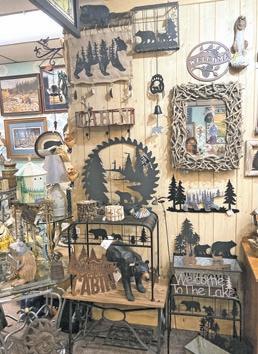
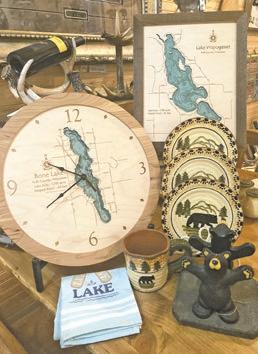

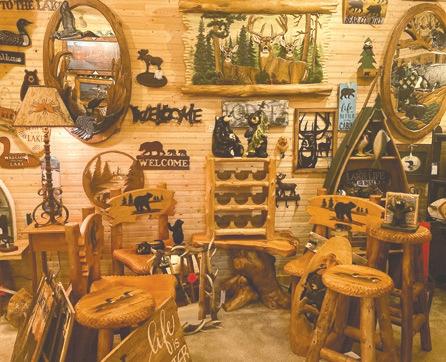
Once this happens, the beetles wreak havoc on the invasive population.
With Purple Loosestrife having a natural remedy to the problem, and its lack in overall waterbodies, it makes the other invasive species seem impossible to manage.
The other two significant invasive species that are in the lake are both the Chinese and Banded Mystery Snails.
Unfortunately, both snails are very prevalent in Polk County water systems. Between both species, they are in a little over 90 waterbodies. That is almost a quarter of all lakes in the county. The snails don’t pose as much of an issue as the Purple Loosestrife but do cause some inconvenience.
The main problem arises when people partake in recreation on the water. When swimmers or boaters are near shore and have had their feet wet for a while, the shells could pose a problem to your feet.
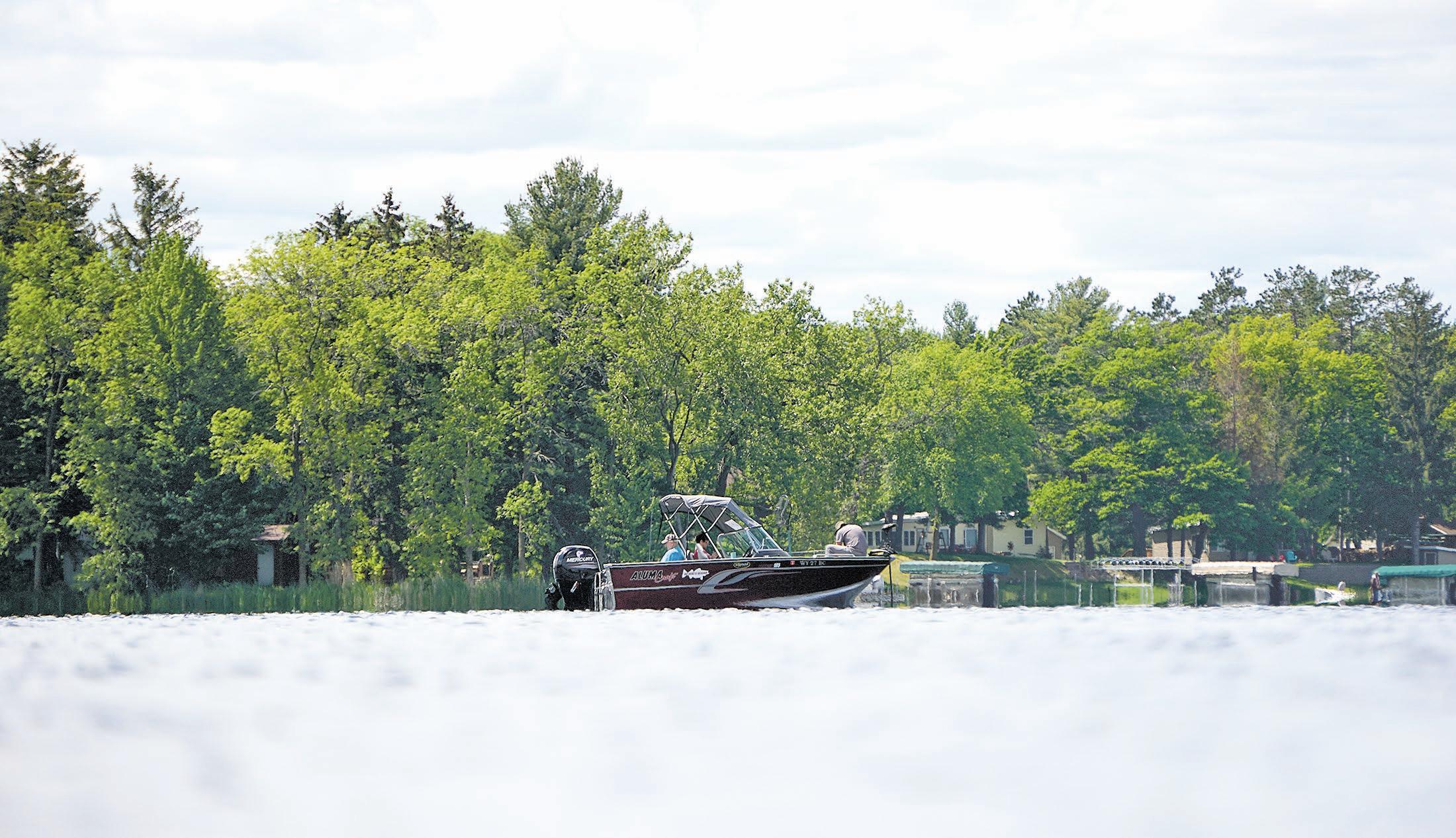
With the skin being wet and the shells being sharp after the shell breaks, it can lead to pretty bad cuts on the bottom of people’s feet. The other main issue with them is that once they have been out of the water and have dried out,

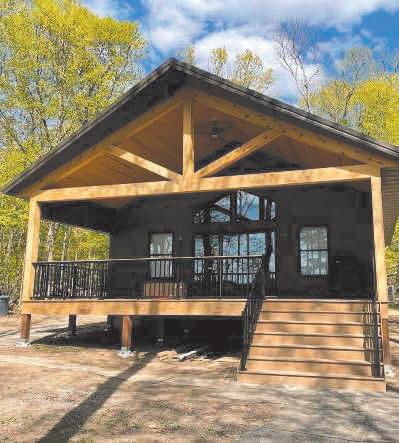

they begin to stink making it uncomfortable or annoying being near them.
The main issue with the species is that there is no DNR method to counteract the spread of them and how they reproduce is still a mystery.
“There's no approved management through the DNR other than just if you wanted to manually remove them. But, as far as treating the lake with some chemicals or something to get rid of them, there's nothing at this time to really
manage them. And they're kind of a unique species. The reason they're called a mystery snail is because their reproductive system is kind of a mystery on how they actually reproduce,” said Sorenson.
Not only do they seem like a very annoying creature, they can virtually live anywhere that is near water. With a diverse set of habitats it can live in, it can often be seen in sandy beaches, muck, and in open water. The best way to manage these invasive species is that if you see them, to pick them up and either throw them into a compost pile or the garbage. Outside of that, they are extremely challenging to manage.
If you would like to know if there is an invasive species on your land or at the lake, reach out to Polk County Land and Water Resources for more information on how to manage your invasive species. ■
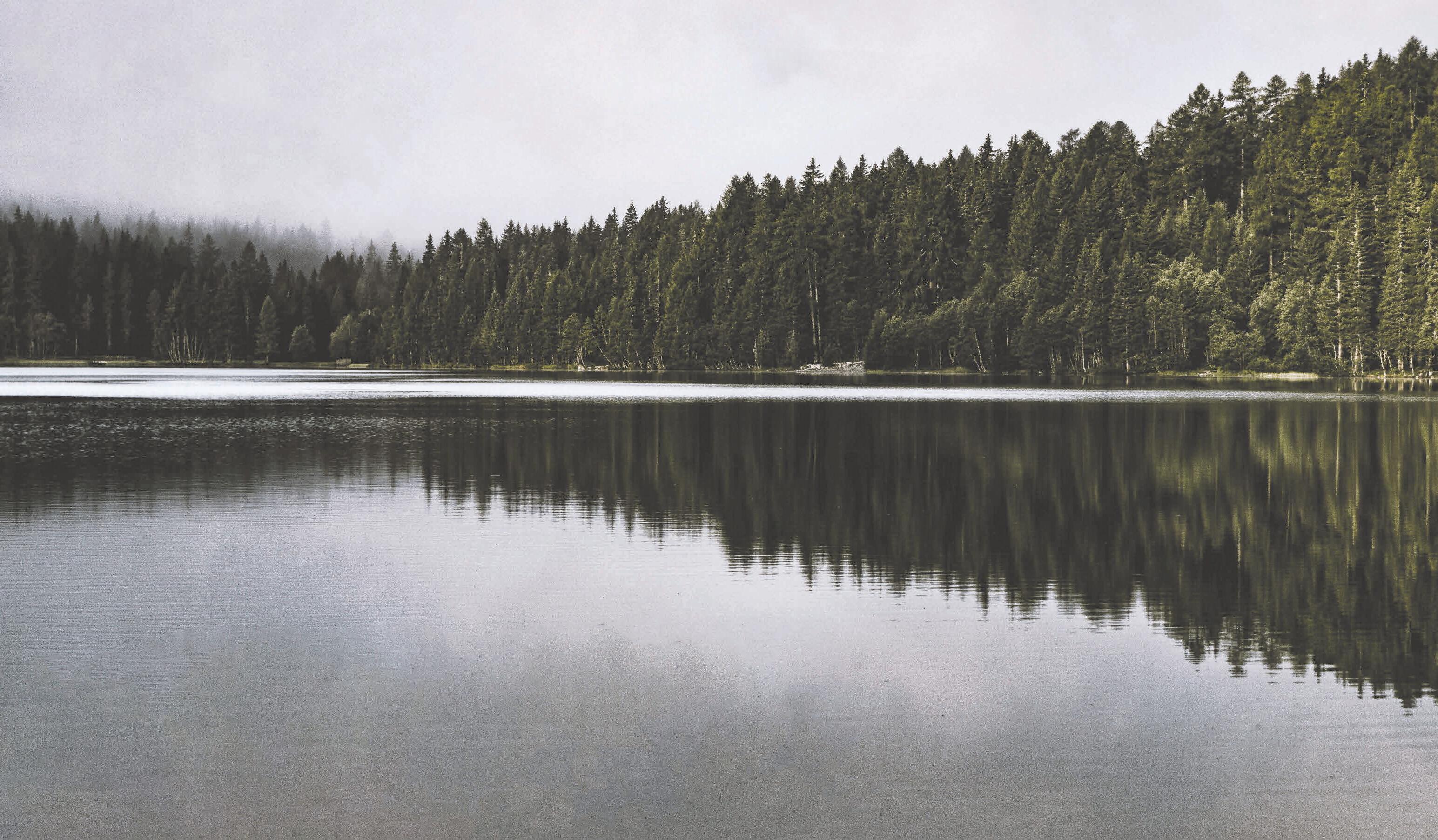

Boat Landings
Pike 1 • North Twin 1
Fish
Panfish, Largemouth Bass, Northern Pike and Walleye
Invasive
Species
Chinese Mystery Snail, Curly-Leaf Pondweed, Eurasian Water-Milfoil, Purple Loosestrife (North Twin)




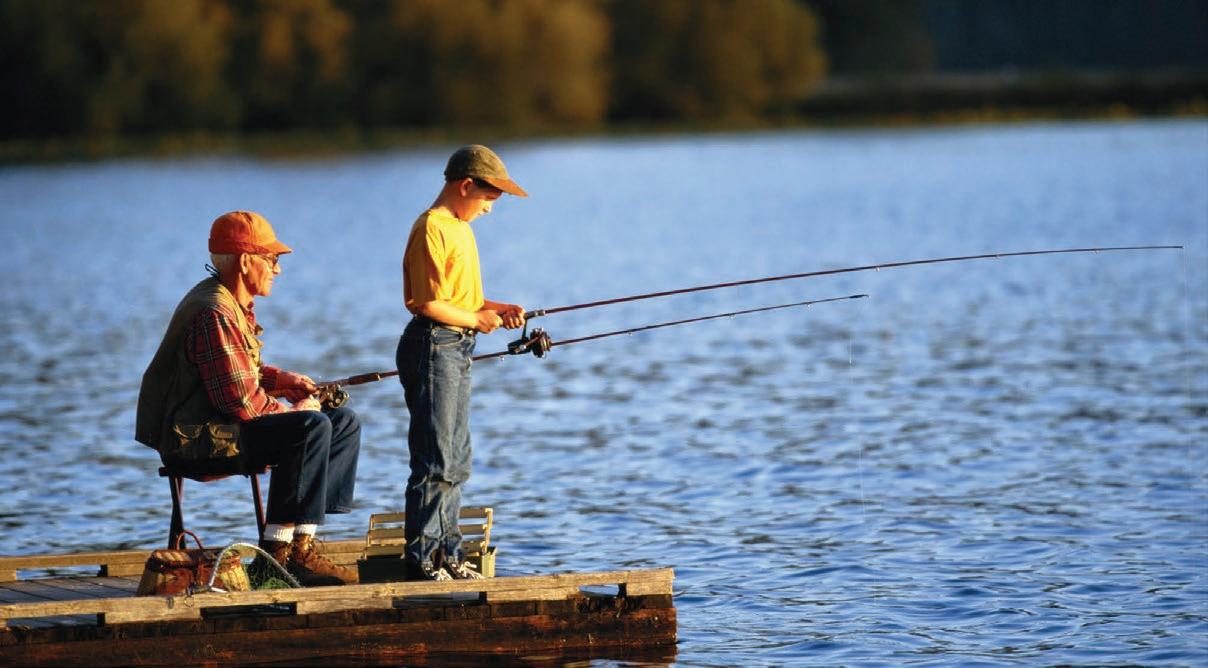


Muskellunge or Muskies are among some of the largest fish the state has to offer. They are native to the region and can only be found in this part of the world. This makes Muskies a major draw for anglers throughout the nation. For most though, it is about overcoming the challenge of a difficult catch.
“The fact that they're the biggest fish, generally, that are in a lake and the challenge of catching them is exciting. Everybody talks about how difficult they are to fish for and to actually catch and I wanted to catch as big a fish as I could,” said Aaron Cousins, Polk County Angler.
Cousins’ journey for his trophy started when he was just ten years old. When he was a boy his father, Craig Cousins, would take him out on the lake fishing. When he first started, Cousins would use whatever he could get his hands on. At that time, it was a rod that was used for Bass and Northern Pike. The bait he used at the time was also pretty undersized for the kind of fish he was going after.
That didn’t deter him though as he would eventually land a few smaller Muskies. This would experience would lead him to wanting to catch a full-sized Musky. Once Cousins realized this was something he wanted to keep doing, he got the right equipment for the job. He began to put money away for larger rods, heavier line, and bigger baits to handle the size of the fish.
“For muskies you're generally using a heavy or extra heavy power rod, which is just heavier and stiffer than your normal rod. And a bait casting reel is just capable of handling a lot more weight and they have a stronger drag, more resistance from the fish
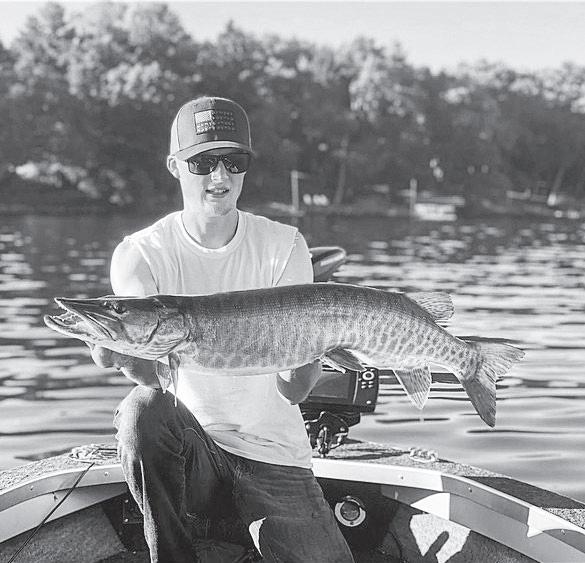
pulling. And the line you generally use is braided fishing line, which can be anywhere from 50 to a 100 pound breaking strength,” said Cousins. The reason for such heavy duty gear is because of the weight of the fish. The record weight for a Musky is around 70 pounds, where on average, they weight closer to 50 to 55 pounds. The weight and size will also be dependent on their habitat. A Musky in the Great Lakes would have a better time of growing larger than one you may find in the lakes around here because of their access to more food. Since they are also the apex predator in most lakes, their density compared to other fish is

very low.
Cousins had many strategies on how to catch these fish but kept most a secret from his decade and a half of experience. He did reluctantly give up a few pieces of guidance for catching these massive fish. The first, is to go out early or in the evenings, before sunrise and sunset. At this time, the Muskies are on the prowl for their early breakfast and late dinner, making it more effective time to try to land one.
The next piece comes in the form of the baits people use. The weather will also be dependent on if it is hot or cold. If it is cold, he recommends smaller, slower moving bait because

Muskies will be not as active and will move slower. In the warmth, it will be the opposite. When the water is warm the Musky are more active, and recommends using larger, faster moving bait.
Patience may be the greatest skill an angler should have when attempting to reel in a Musky because of the time put in to get them into the boat.
“I would say in general you can expect many hours. I've gone anywhere from 10 to 20 hours between of actual fishing on the lake, time between catching fish, or sometimes even seeing them. You might catch a couple in a row within a couple hours and then you might go a couple days without even seeing a fish.,” said Cousins, “That's part of the draw to them I think is just the, the difficulty, the challenge. Because even if you know they're there, you can't always force them to bite.”
In all of these years, Cousins has been able to bring in close to 60 muskies in his lifetime but there is one experience that takes the cake. His largest Musky caught.
It was in late September, the perfect time to chase big fish before the colder weather sweeps the region. Cousins decided to go out by himself this late afternoon and took his boat to Bone Lake. The plan was to fish until after dark or until he caught a Musky. He had sat for a few hours, trying multiple spots. However, it was a rough few hours to say the least. In that time, he hadn’t felt a bite, had any follow the bait, or any hint of a successful night. As the sun was in its last few minutes of light, Cousins made his way near his last fishing spot, close to an island. As he let out his cast the sun was no

longer there, and he was fishing in the dark. He remembered the night being calm and that it had gotten to the point where he couldn’t see his bait anymore. He had to rely on his ears for the rest of the night. His bait was a surface water bait and he could hear it splashing in the water as he reeled it near the boat. Halfway back to the boat he heard another, much larger splash, and he set his hook. He could tell he had a heavy fish on the other end of the line and went to doing his best to get the fish into his boat.
“I remember being really hectic and I, luckily, had a headlamp on. I had to turn a light on so I could see what I was doing. And the fish fought hard of course. It took me all the way around the boat a couple times and I finally was able to get my net in the water and get the fish in. And I knew it was big, I guess I didn't realize it was going to be my biggest fish ever,” said Cousins.
The fish measured a staggering 47 ½ inches long. After measuring it, he took a photo immortalizing the memory of his largest Musky caught. As he got the Musky on the line, he was met with a huge adrenaline rush. He was full of excitement for what would be coming but was in shock when he finally was able to get a good look at the fish. The fish would weigh something in the 30-pound range as well.
After years of being on the lakes, this has become a passion for Cousins as he spends his summer on the lake or in the woods. Fishing helps with deterring the stresses of life and creates a fun time to be able
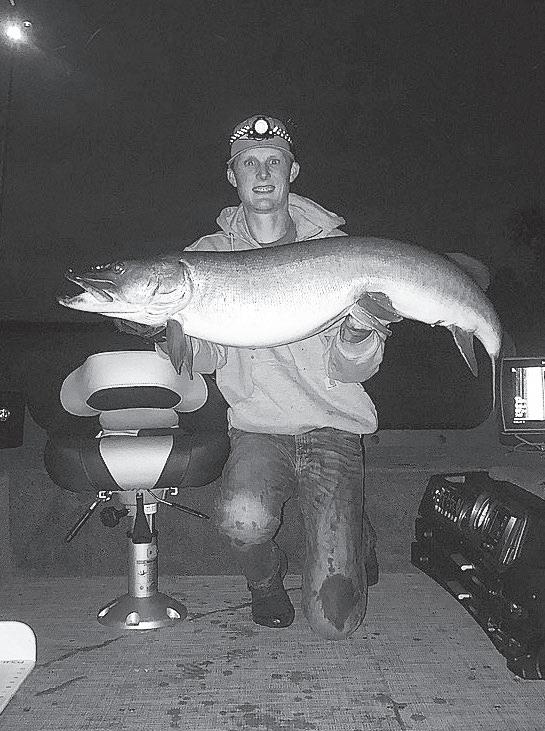
to spend with his family. He encourages anyone wanting to give Musky or any fishing a try. Whatever way you spend your time on the water, fishing will help open your eyes to what you might be missing on the lake.
“If you've spent time on a lake like let's say boating or tubing or anything, but you haven't really fished, you probably aren't even noticing 90% of what's in

the water. All the cool nature and everything. That's the life that's in the lake when you start fishing, you're just noticing all these little details of you seeing all the different types of fish and the different structures and just kind of a whole other side of life that's under the water that you don't generally get to see,” said Cousins. ■
Wisconsin is the place for cheese heads, and not just for football. Clayton will be celebrating their 57th annual Cheese Days celebration. The village puts on different events through the weekend with celebrations starting June 14th and will end Saturday the 15th.
The first day will have many different events happening throughout the village. Leading off the day will be a community wide garage sale, where area residents will have many different things to pick through. After people are done finding their deals, they can come and watch young kids do a pedal pull. Much like a tractor pull, the kids will do their best to get as far as the can as the weight gets progressively heavier. Friday night will be capped off with a street dance down Clayton Ave. East. There is also free admission to all evening events at the fire hall. Saturday starts off with a nice 5k walk/run starting at 7:30 in the morning. Winners have the opportunity to take home a medal for completing the Clayton Cheese Days race. In the afternoon the village parade begins, with Jim and Karen Kuntz being the grand marshals this year.
Late afternoon will feature two different pulling events. The first will be the tractor pull starting in early afternoon and goes head to head with other competitors. Winners in each bracket will win a trophy for their efforts. Once the tractors are done, the trucks come rolling in for their turn at pulling.
With a weekend full of fun events and getting out into the neighborhoods, it will be a great time for those who wish to go. For any questions, reach out the Village of Clayton website for more details. ■


If you used to get the Laker delivered to your door and have a mailbox approved by the postal service and are not receiving it, please email your address to polkcountylaker@gmail.com and we will add you to the list.
When taking a craft out on the water the first thing that may come to mind is a boat with some sort of engine to get you where you need to be. And in most cases, you would be correct. There are many different types of boats and watercrafts to get you out on the lakes and streams this year. One that is very popular and affordable is the kayak.
Kayaks have been around for a long time and have evolved into what most people see today. A kayak is a small, lightweight watercraft made for one person. Typically, the kayak will come with at least one oar to help navigate the waters. Over the years, it has become
an affordable option for those who love lake life and being on the water.
First created by Inuit tribes in the arctic regions, they were essential to life in the far north. Tribes made kayaks from wood and animal skins. They would then use these small boats to hunt and fish, providing food for their tribes. There were a couple of early designs made specific to what their needs were. For open water, the kayaks were longer and more stable to be able to navigate the open waters. The other design was much smaller, and shorter, to be able to make their way through floating ice spread throughout the water. Back then, a kayak was
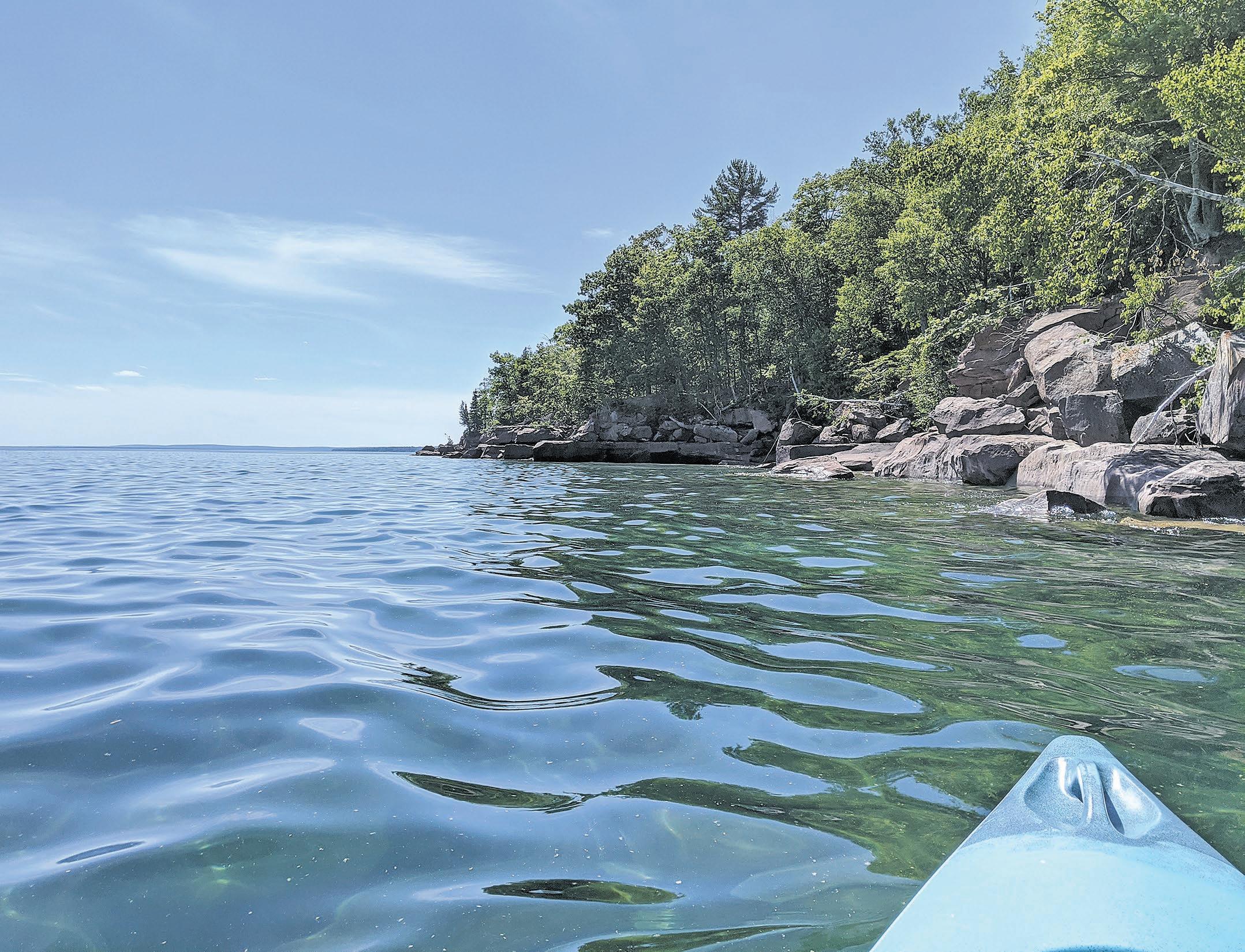


made unique to the person who would be handling it. This made individual kayaks special because they were made for a specific tribal member. If other members went to use it, they would find difficulty in managing the balance and using it effectively.
Kayaks first gained notoriety when the tribes were first discovered by Russian and European travelers as they explored the northern hemisphere. Impressed by the design and ease of use in open water, traversing the arctic with guides became easier. The Europeans would take this design and mold it to their culture and uses. Over the course of several decades the kayaks have become hugely popular for different recreation. Depending on your skills, there are plenty of opportunities to have fun on the water. And the best part? You don’t have to break the bank to be able to get one.
“So I bought them in the summer of 2016. I got them at Menards, just the cheapo $200 kayaks and they've lasted quite a few years of ripping down the rivers and stuff with them. They float. It's a very good beginner kayak.

I believe the brand is Viper, just those cheap injection mold kayaks,” said Connor MacKinnon, kayak enthusiast. The kayaks have lasted MacKinnon over eight years, and he is still taking
them down rivers and on lakes. MacKinnon has three kayaks and some are made a little different than the others. The two styles of kayaks he has are the sit-in and recreational
kayaks. The recreational are going to be your very basic kayak design, with an opening to sit in and an oar to help maneuver the waters. The style will be more of an average length and will not sit too far into the water making it easier to tip over. The sit-in kayaks are for those who want a more relaxing experience on the water. Made for lakes and calm waters, the sit-in kayaks are made to have more stability and a lower profile in the water meaning you won’t tip over very easily based on the design. This style of kayak is typically what anglers use when they are fishing on the lakes to stay inside of the watercraft. But the best part of kayaking for MacKinnon was the ease and affordability.
“Originally I had bought the kayaks first just because they're portable. I can go out myself with just one. My fiancé can go out and take one if she wants, whenever she wants to go. It's just very convenient. You don't need to have a boat launch to use them. You can put them on any vehicle essentially.

Granted you can get like a foam block or something for your car for transporting it, but they fit in back of pickup trucks, and on trailers pretty easily. Very lightweight, very maneuverable,” said MacKinnon.
Not only are there benefits to the wallet and its lightweight nature, kayaks are also a great way to socialize with others on lakes, rivers and streams. Depending on where you are located, there may be a kayaking club near you. MacKinnon recommends people seek them out because it is a great way to meet new people and have fun in the process.
Another aspect of being a part of a kayaking group is that they help manage the different river systems when there is debris in the river. For example, if there was a downed tree that went across the stream, the kayakers would report that
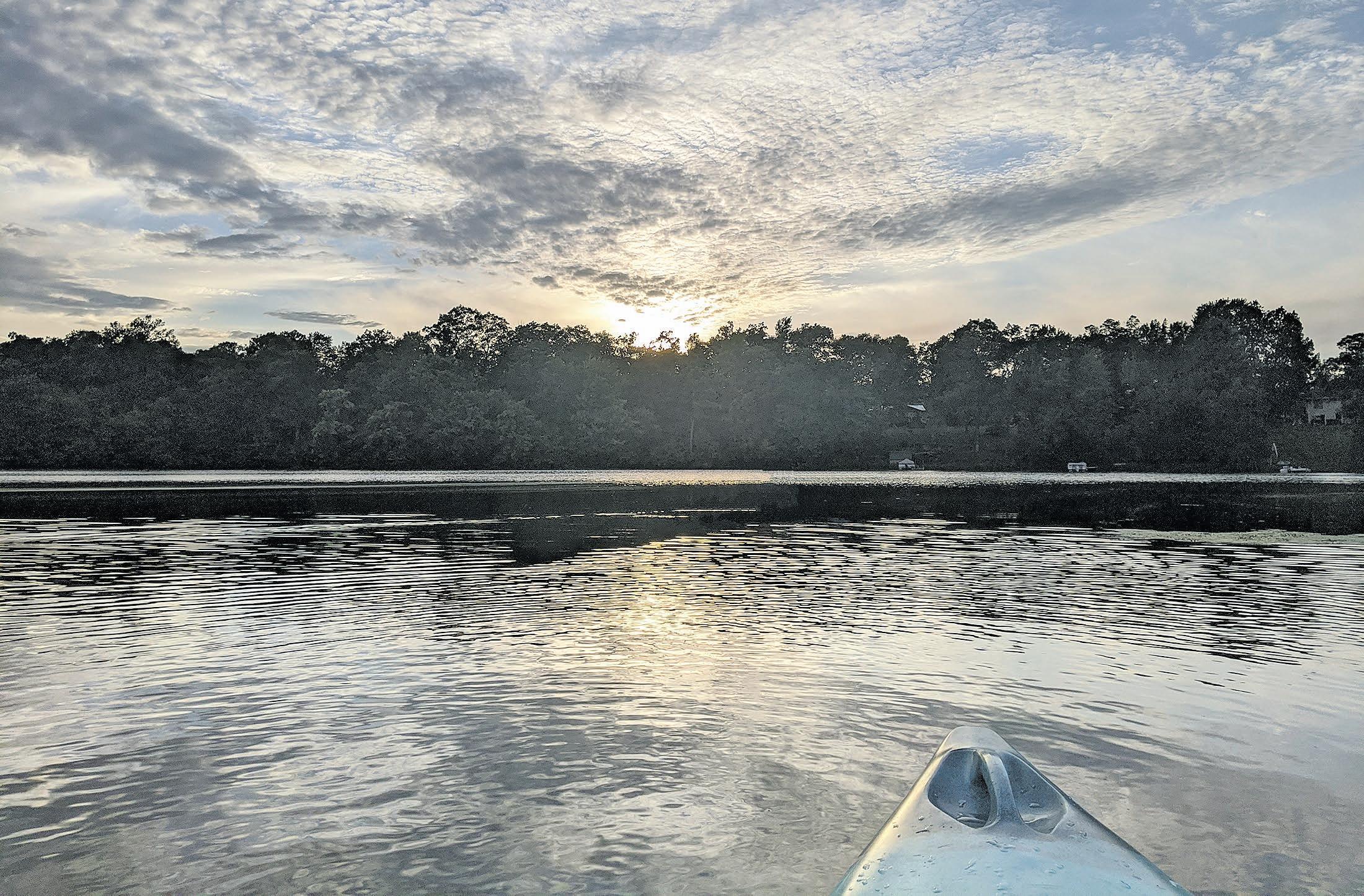
to their local municipality to help clear and make the water system available for others to enjoy.
The northwest region of Wisconsin is a prime location to enjoy getting out on the lake with a kayak. With over 400
lakes in the county, it wouldn’t be hard to be able to find a waterway that fits your desired kayaking experience. But once
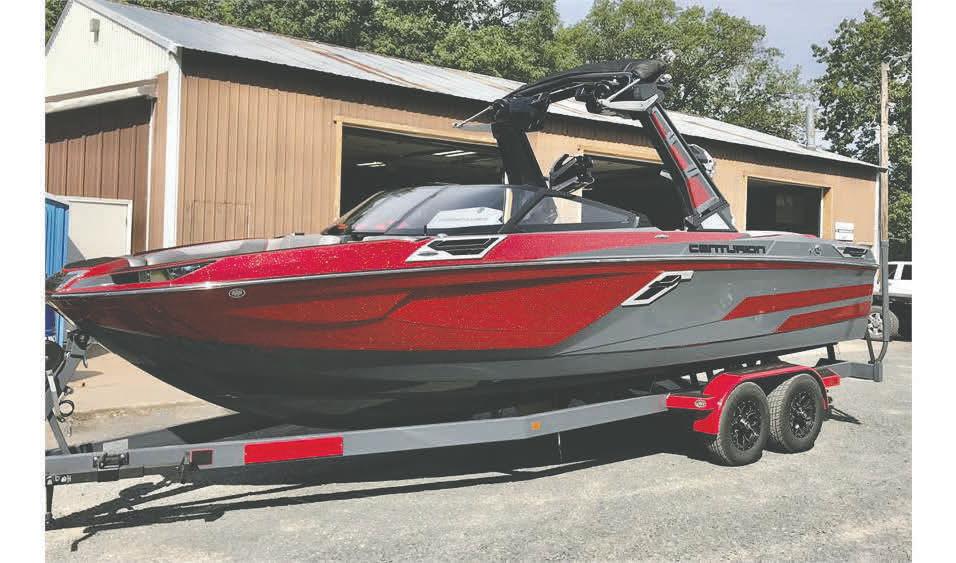
you start, it may become a lifelong habit.
“I would always recommend kayaks to someone if they're willing to try something new. It's fun, it's it almost addicting. I mean I love going out with my friends on the weekend or even some local people in town. Just meeting people out there. It's relaxing. It's a free event to do. It's very easy and affordable to obtain. I know in the recent years some of these kayaks you see are more expensive, but you also don't need a top dollar kayak to last you a long time,” said MacKinnon, “I mean I've had these $200 kayaks for almost seven, eight years now. Just got some scratches and dings on the bottom, but they still float. They don't have leaks. They'll last for a long time. It's one of the more affordable investments you can make and get a lot of life out of them.” ■
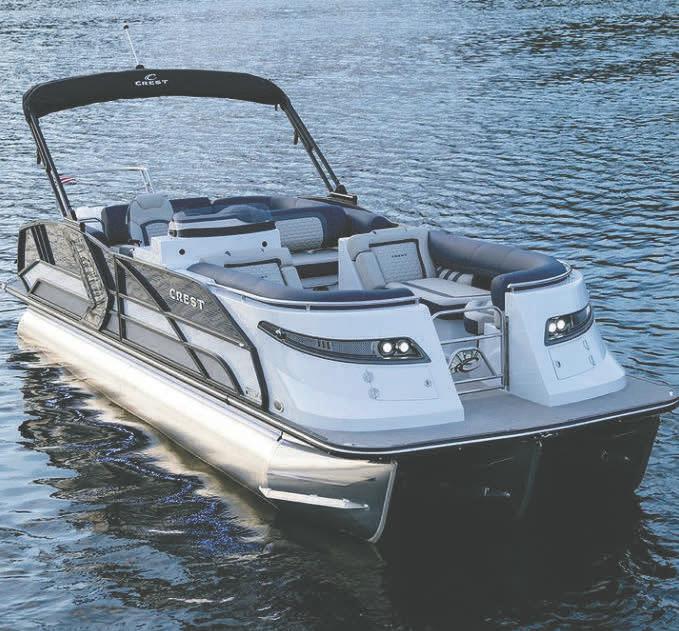







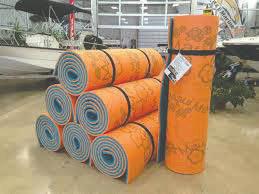




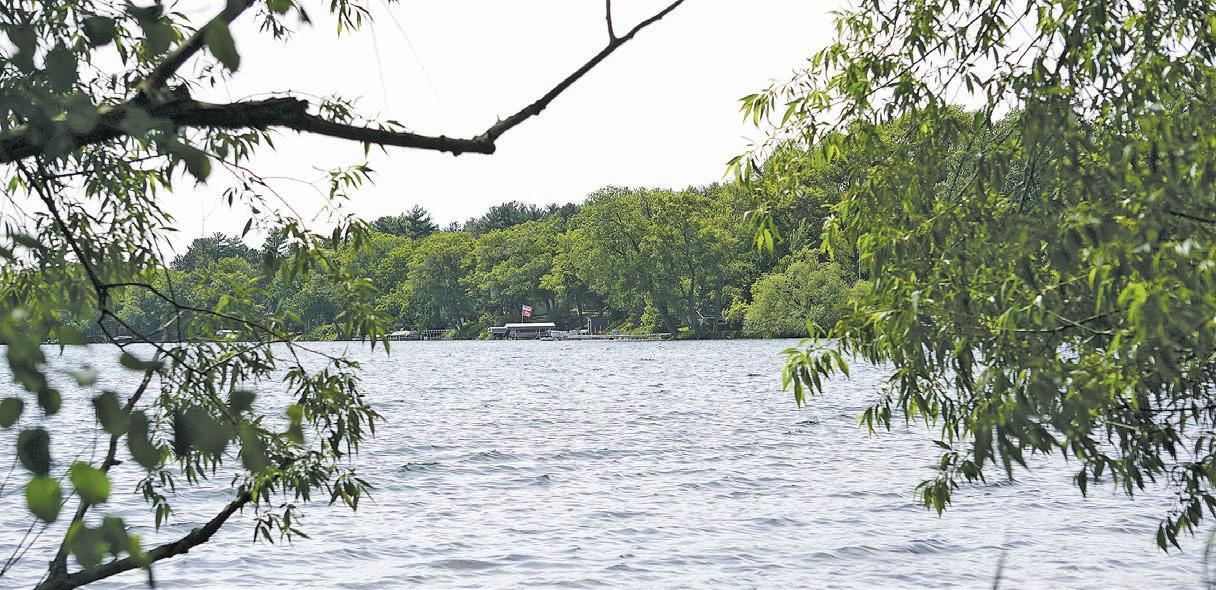







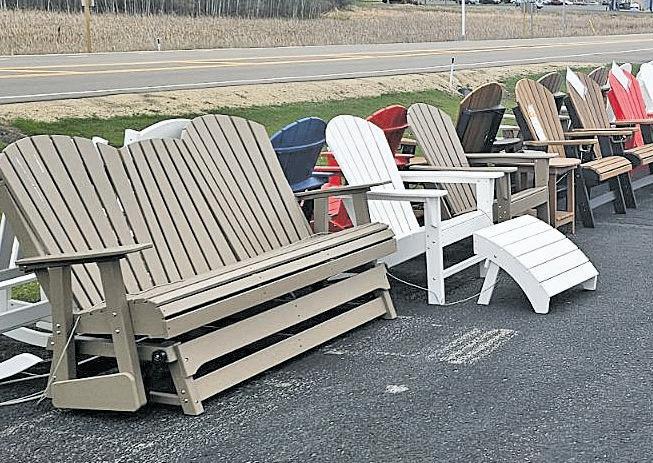







Every spring turtles make their way from their wetlands to lay eggs, but also run into the issue of being killed before they get to their nesting spot. The Wisconsin Department of Natural Resources wants to make sure that people are educated, and if they can, help the little critters out this summer.
“So ultimately, biologists like me, want people to be careful while they're out either in their communities, in their yards, or driving on roads in and around kind of areas where there's wetlands, lakes and rivers so we can further protect these female turtles. And younger ones as well that are crossing these dangerous roads and ultimately so that we have them well into the future and for future generations,” said Andrew Badje, Conservation Biologist with the Wisconsin Department of Natural Resources.
In late spring and early summer many different breeds of turtles will make their way from the wetlands to find their nest on solid ground. The turtles then burrow into the ground to lay their eggs, burying them, before making their way back to the water. One aspect of keeping turtles around long-term is to help make sure the female turtles are safe throughout the season, since
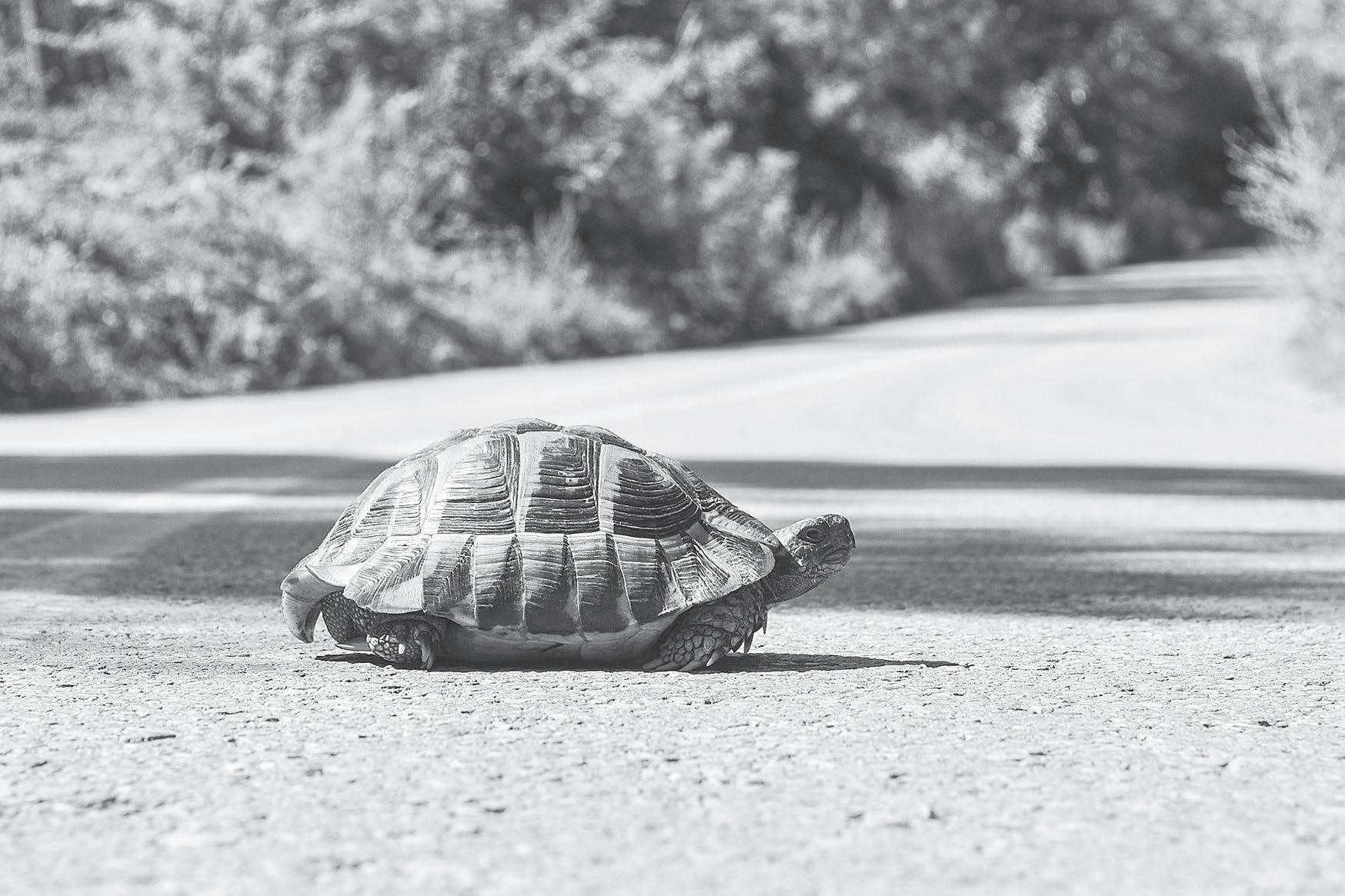
they are the catalyst for having higher numbers of the species.
Turtles are an important part of their habitats and are critical for a healthy ecosystem. A good majority of turtle babies do not make it into adulthood. This is because after they hatch, and are cruising to the water, they will get snatched up by birds and other predators. Similarly, baby turtles are also predated upon by aquatic fish. Largemouth Bass being one of the main culprits, the babies help sustain other species throughout the habitat.
Welcome to beautiful Balsam Lake, a village living in natural harmony. Established in 1905 the Village of Balsam Lake rests on the southwest shore of Balsam Lake in one of the most prime tourist locations of northwest Wisconsin. Whether you are looking to relax or take part in a wide variety of activities, both on and off shore, the Village of Balsam Lake is the place for you! The Village is nestled on the largest lake in the area, (2,054 acres), which is teeming with fish to satisfy the most avid of anglers. The unique shoreline stretches 65 miles and the lake is dotted with picturesque islands and bays. Fine Dining and casual eateries abound and over 50 businesses provide a vast array of services. Live & Work Where You Love To Play

Although turtles do succumb to drivers on the road, and natural predators, the survival rate of turtles is incredibly low already. Once a turtle has hatched, it has a .5% survival rate into adulthood. This means that one in every 200 turtles that hatch will make it to maturity. Some turtle species in the state may have higher chances of survival because of how many times they can lay eggs in a year. Most of the species in Wisconsin generally only lay once a year. However, there are about three different species in the state, one
being the Leather Backs, that will lay two clutches a year increasing their population. What makes the population growth harder is that even if some of the eggs live, there isn’t a guarantee that they will be born female.
Besides their babies making up a good chunk of the food chain, they also benefit the land they inhabit as they get older. Turtles eat berries and seeds most often and will help disperse those seeds throughout the land. Once the food has taken its natural course, it will help fertilize the land. Not only that, but certain species of turtles also have added impacts.
When most think of a snapping turtle they may think about them being mean or a nuisance. They have a major impact on the habitat as well by being nature’s garbage disposal. Snapping Turtles will eat carrion or dead flesh from fish that have died. Eating these already dead critters helps to clean up the ecosystem and will help get rid of the ever so popular dead fish smell.
“They really do like if there's dead decaying matter of fish or other things that we find unpleasant, they're going to be the ones that are keeping these systems clean and getting rid of those by eating those things too. So even though some of the bigger kinds,



more intimidating turtles like snapping turtles, are very beneficial for us,” said Badje. Turtles have the odds stacked against them in nature and now with even more habitat loss near their wetlands. But that doesn’t mean people can’t help improve their chances of survival. The easiest two things someone can do to help the population is to drive carefully near where there are turtle crossings and to pay attention if you were to see one. Badje also recommends helping the turtle across the road but only if it is safe to do so and won’t put you in harm’s way. In most cases it would be fine but he also warns about helping Snapping Turtles because of their aggressiveness and risks they pose. After touching or handling a turtle, you should always wash your hands after because they can carry salmonella.
Another way to help the

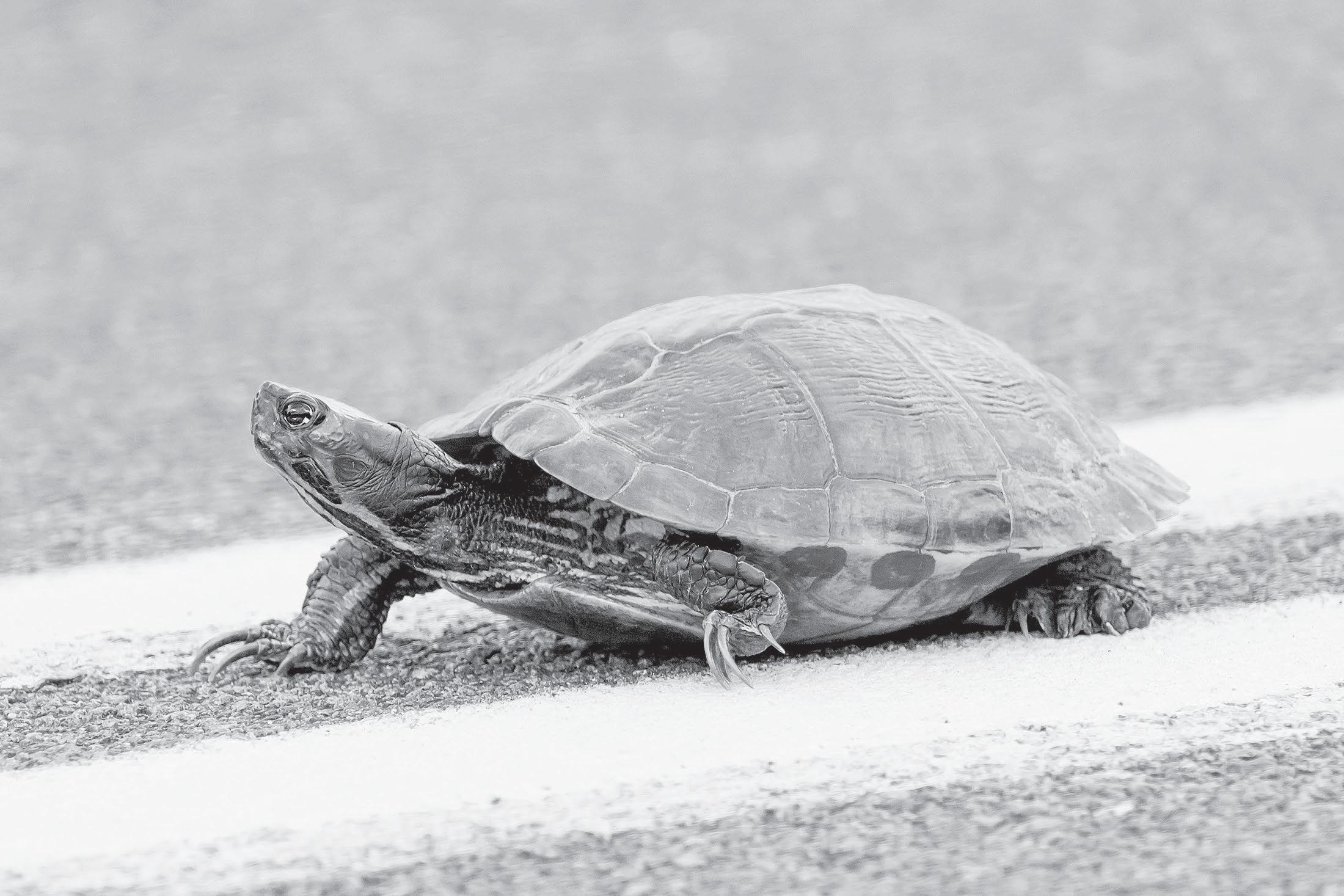
turtles in your own back yard is to make a turtle nest cage. Turtle nest cages are created in a way to help protect the eggs from other predators and
to give them higher odds of survival. Tutorials on how to make your own turtle nest cage can be found on the Wisconsin Department of Natural

Resources web page. The last way to help is to also consider donating to the endangered resources fund that helps to fund management
of the species.
Turtles are a unique animal to have in the state and have multiple different species. With how prevalent wetlands are, turtles are a common sight throughout the region. In order to make sure the species thrives, people need to be conscious of what to do when they see one on roadways and how to help them in safe conditions. One of the things that makes Wisconsin great is the opportunity to be outside, alongside wildlife.
“Wisconsin is really considered kind of like a recreation hotspot for things, whether it's hunting, spending time out on the lakes and, and all that stuff. And so, part of that experience is having wildlife around and turtles of course are one of one of those cool aspects of wildlife,” said Badje. ■


